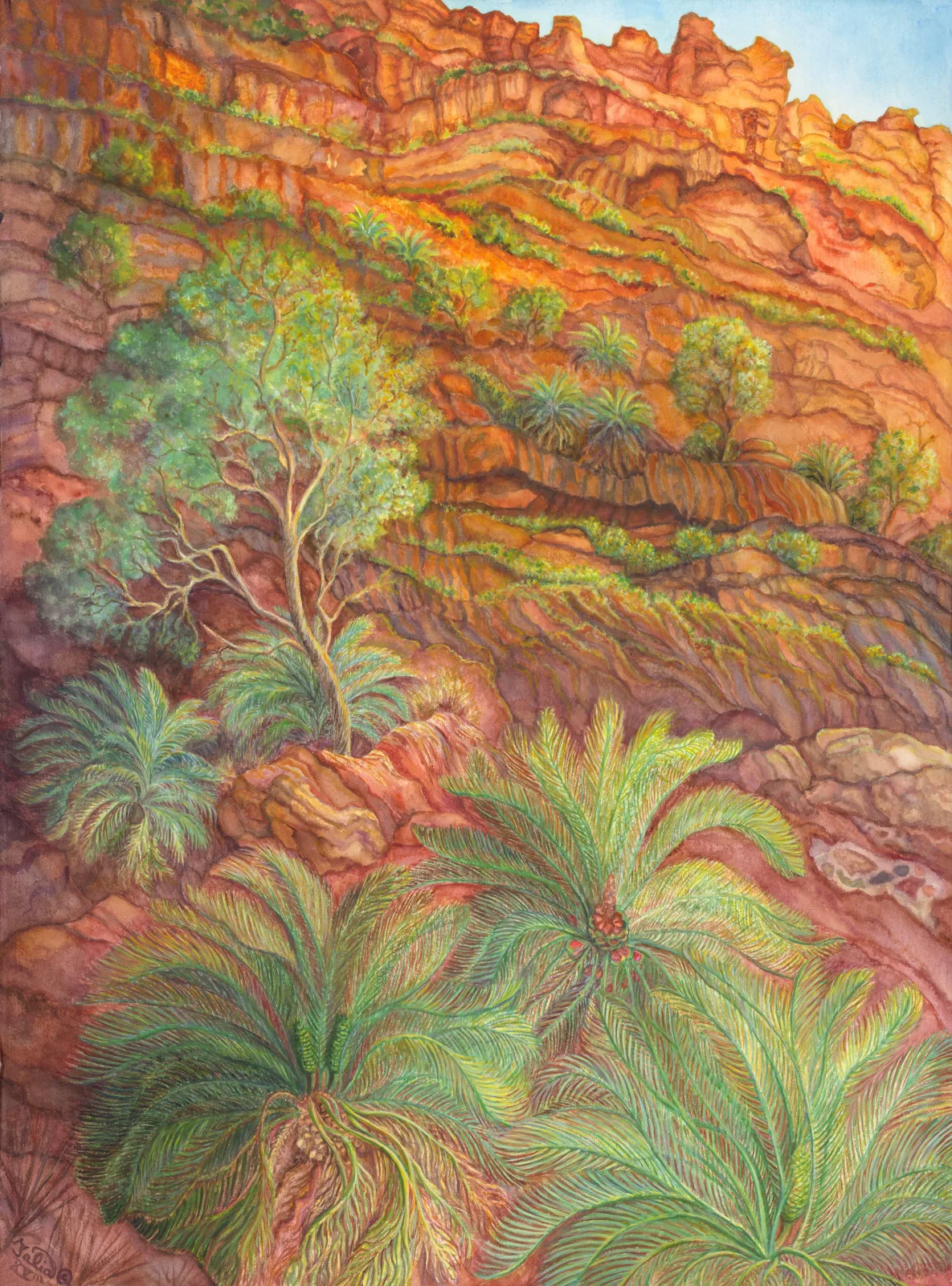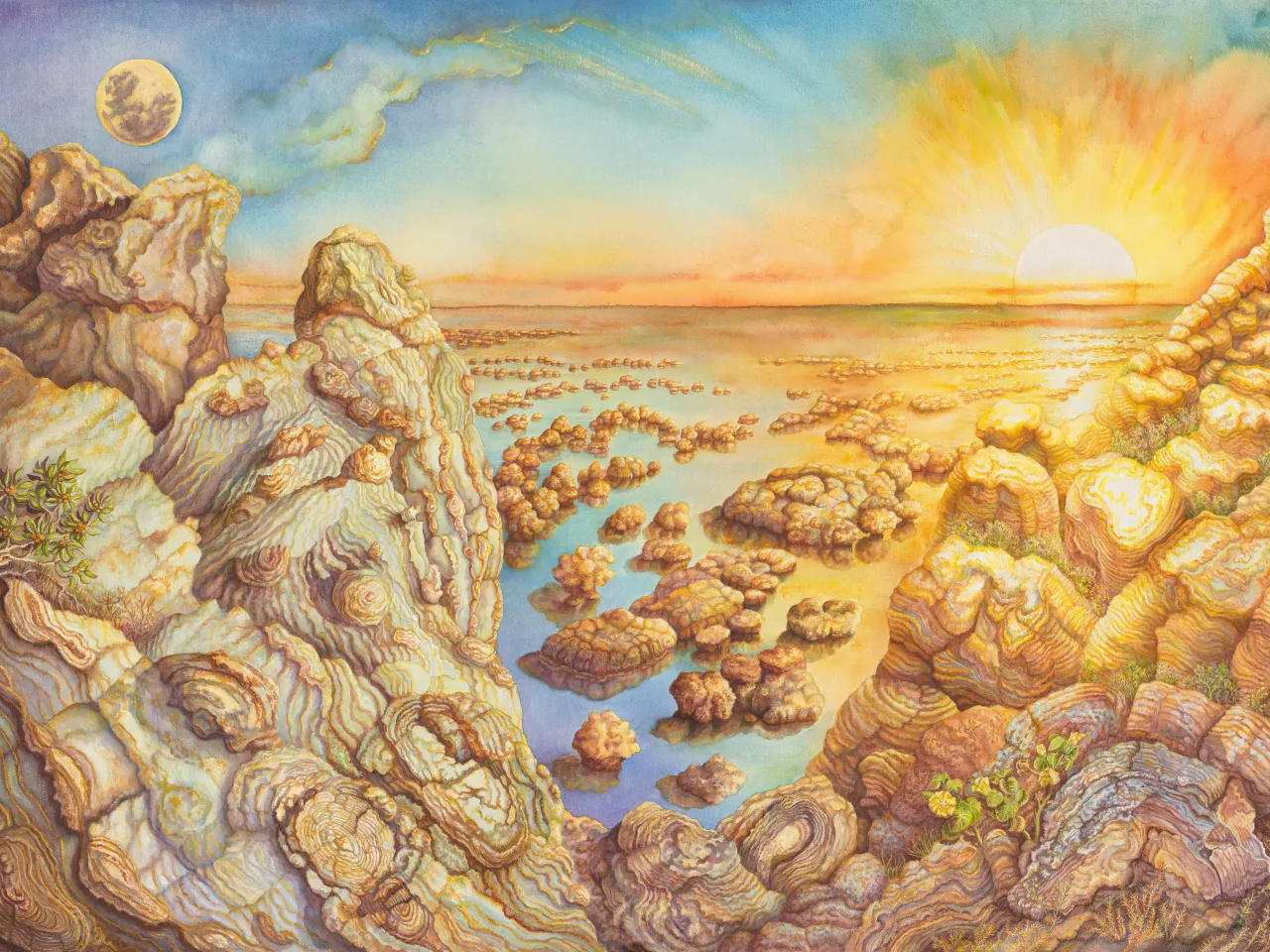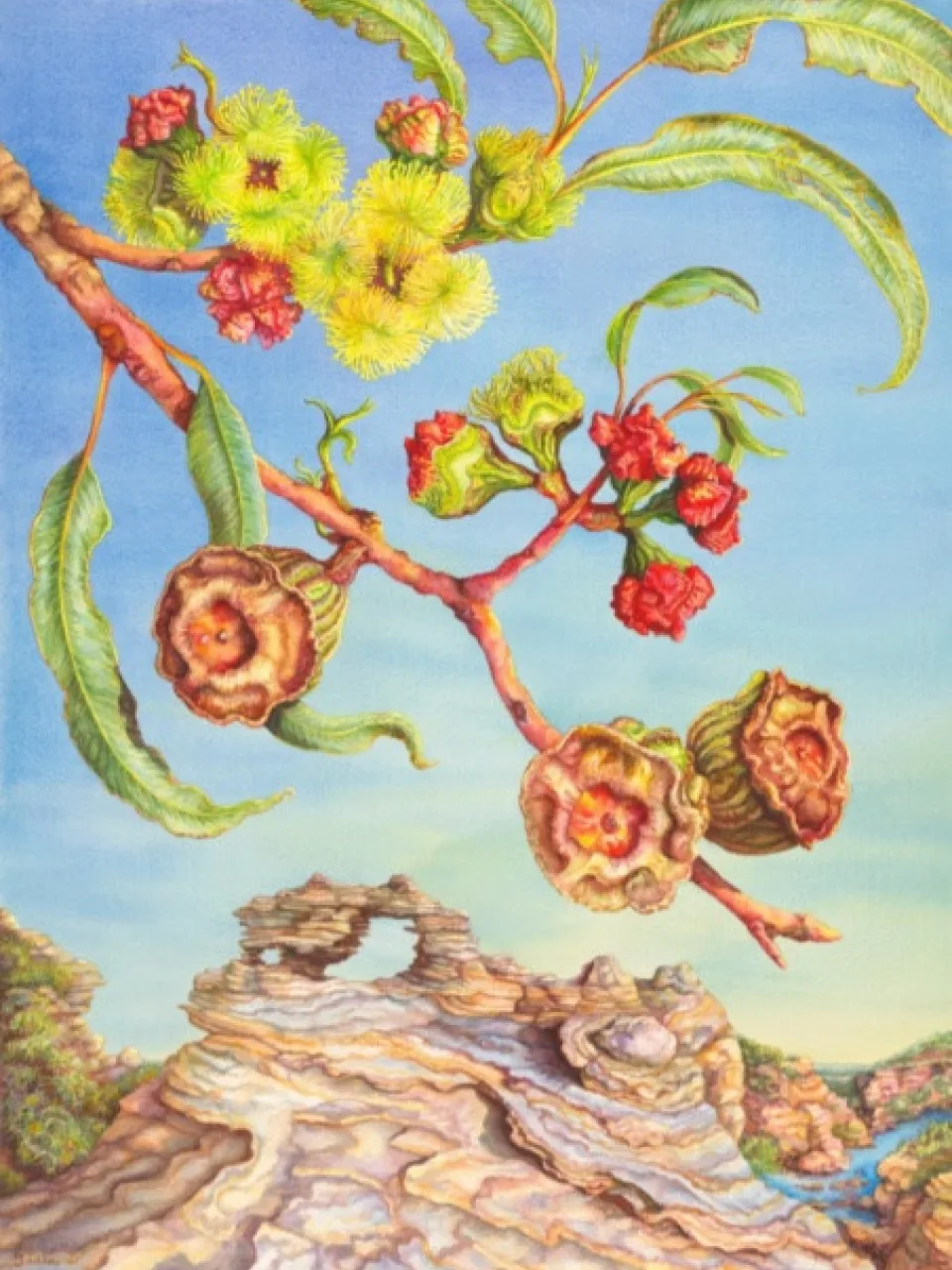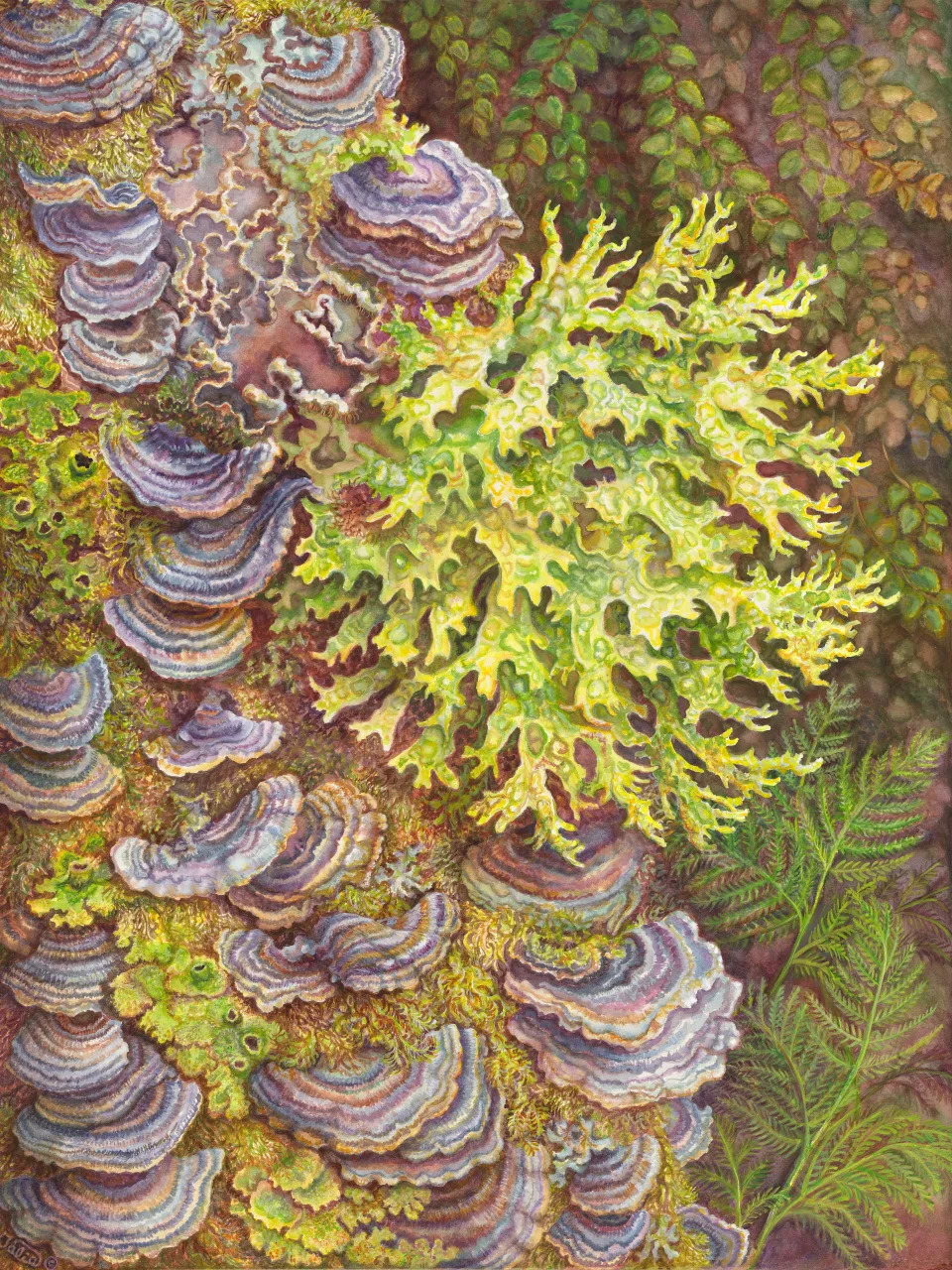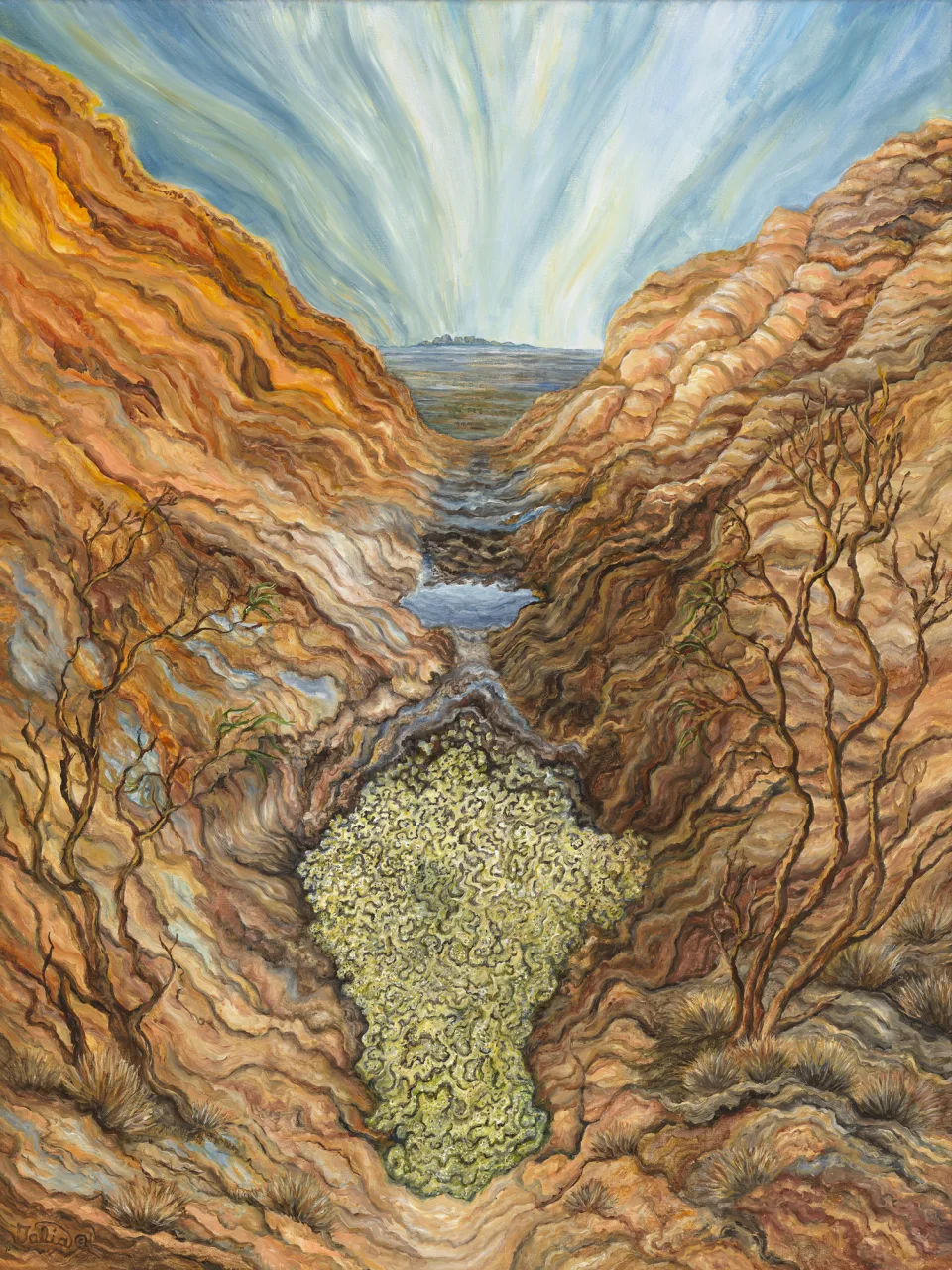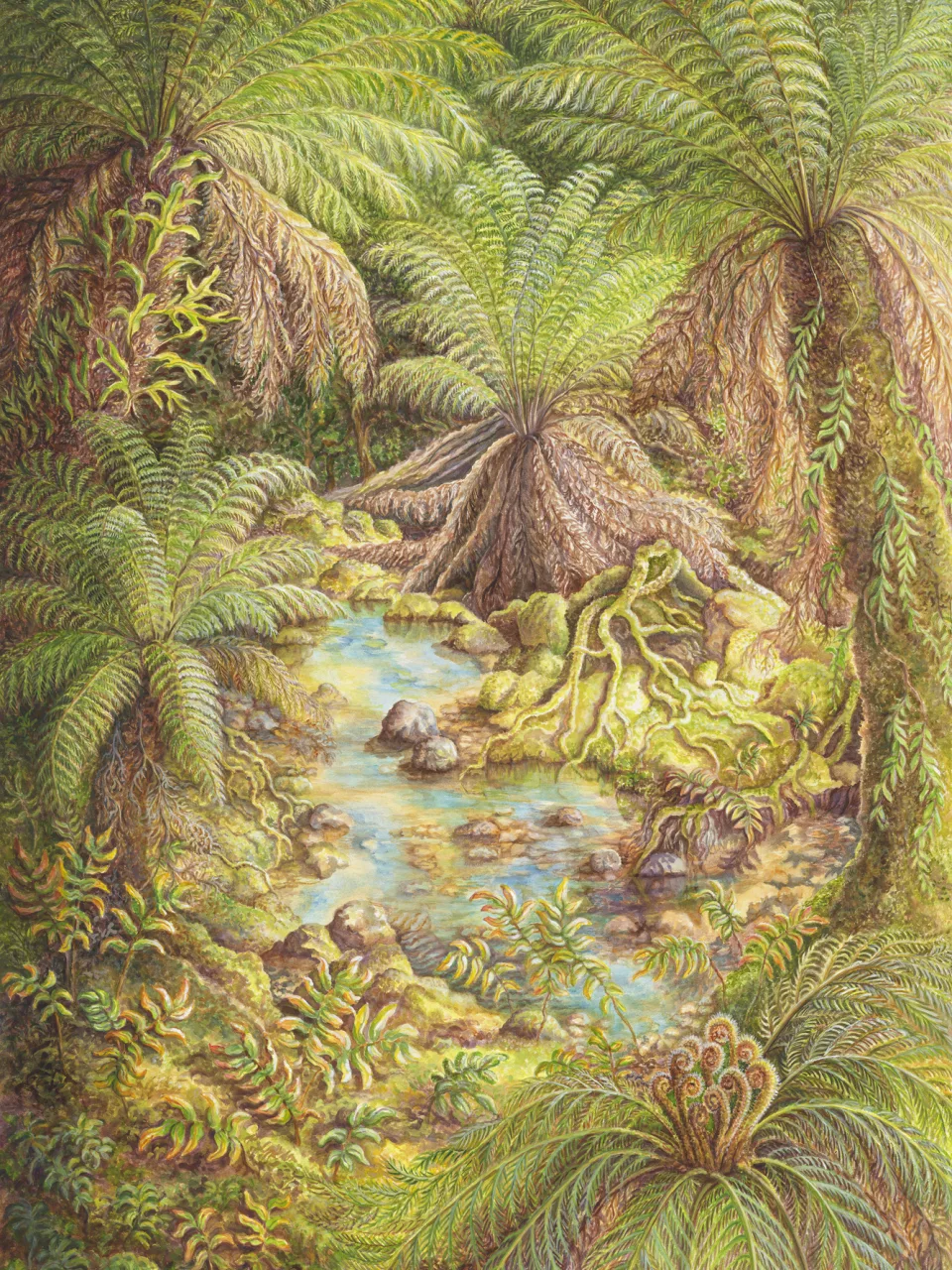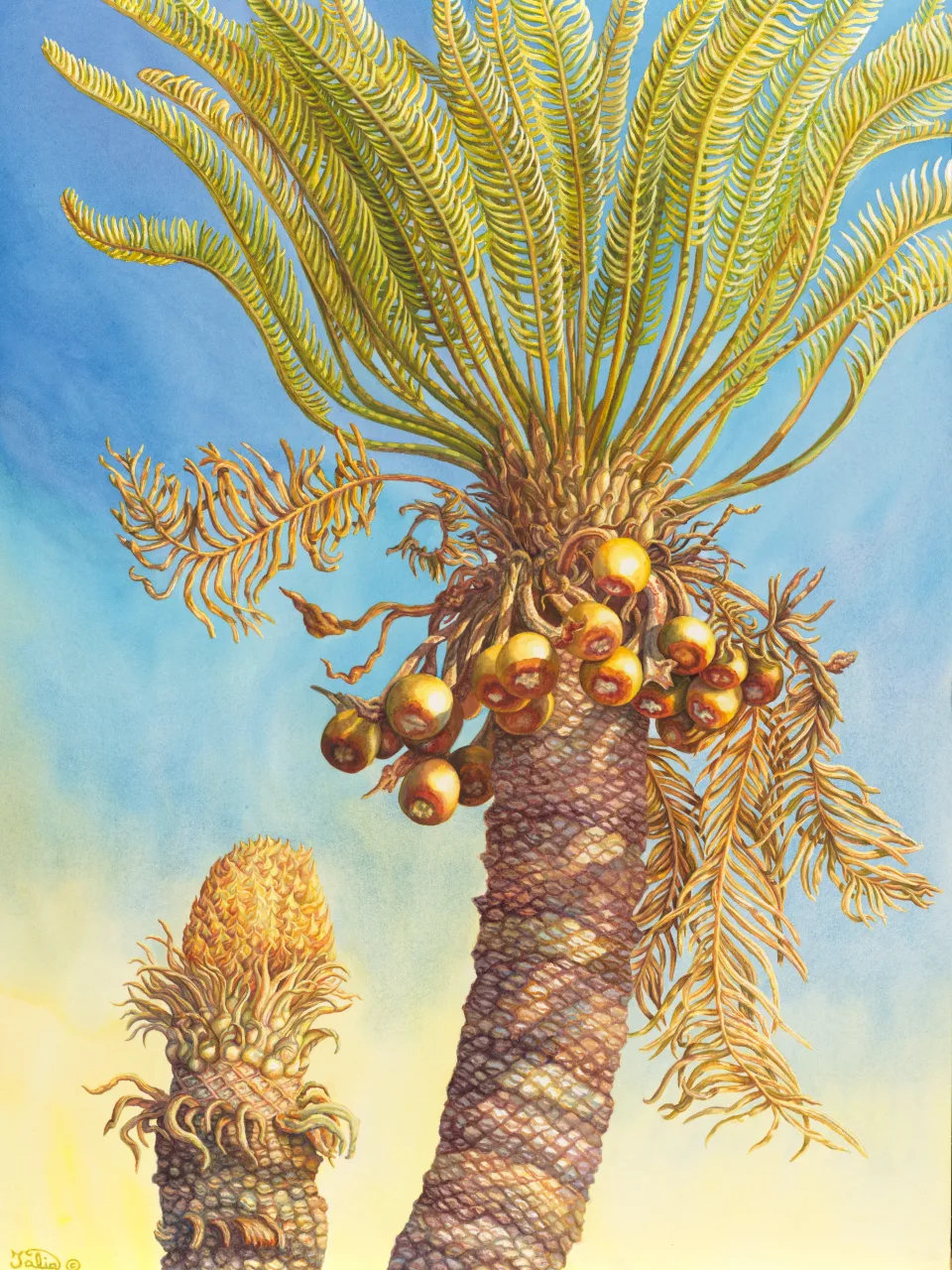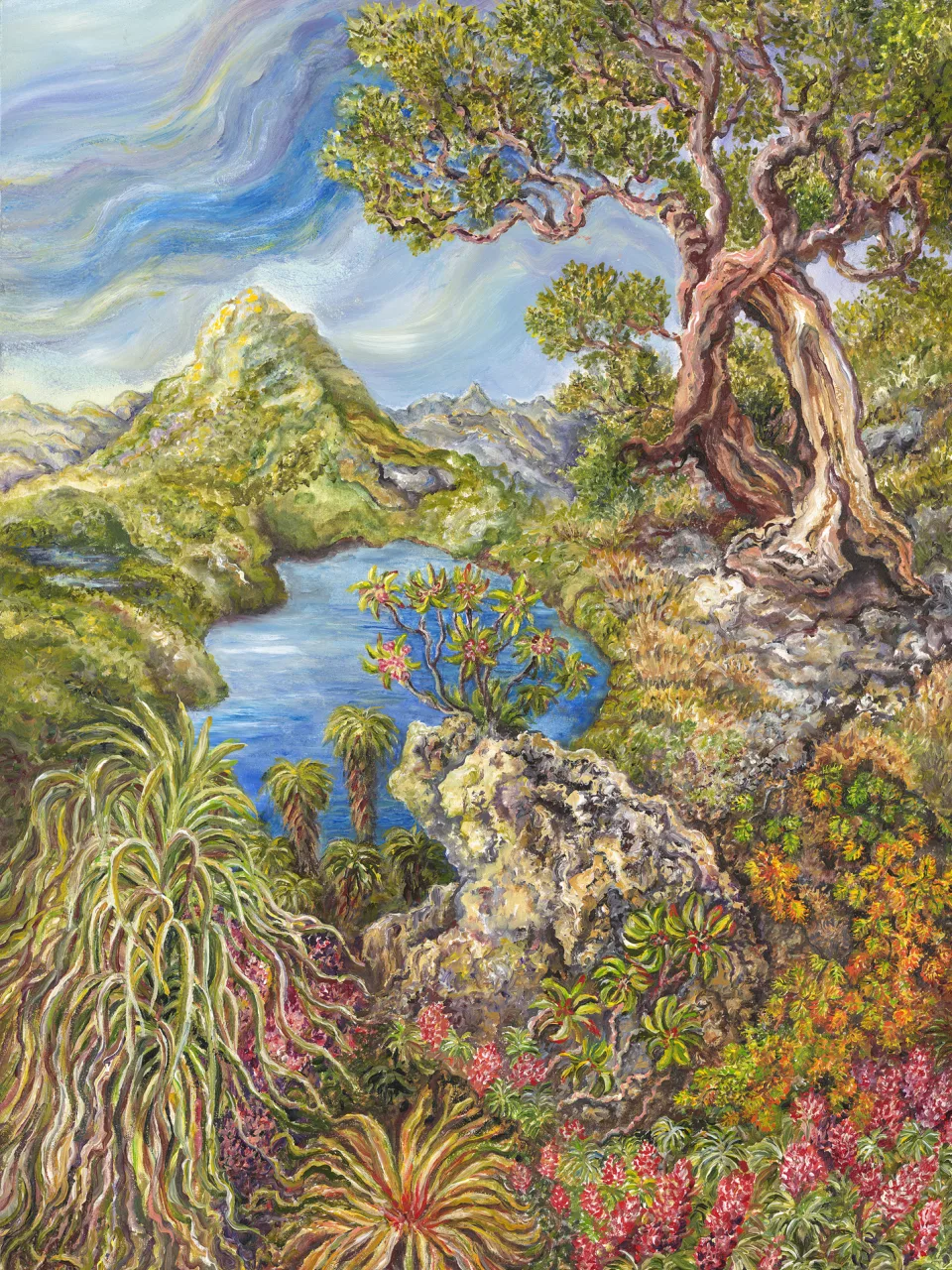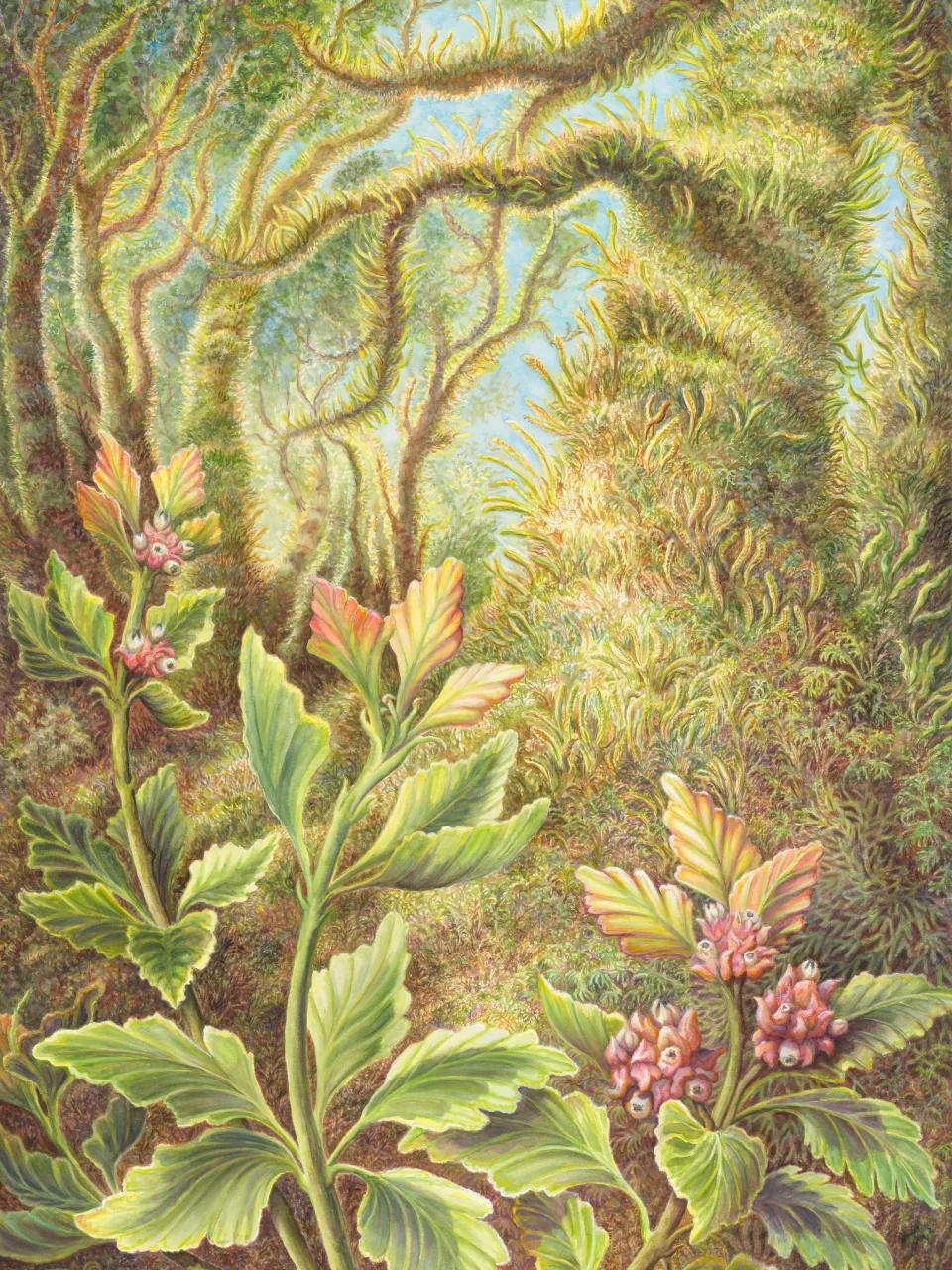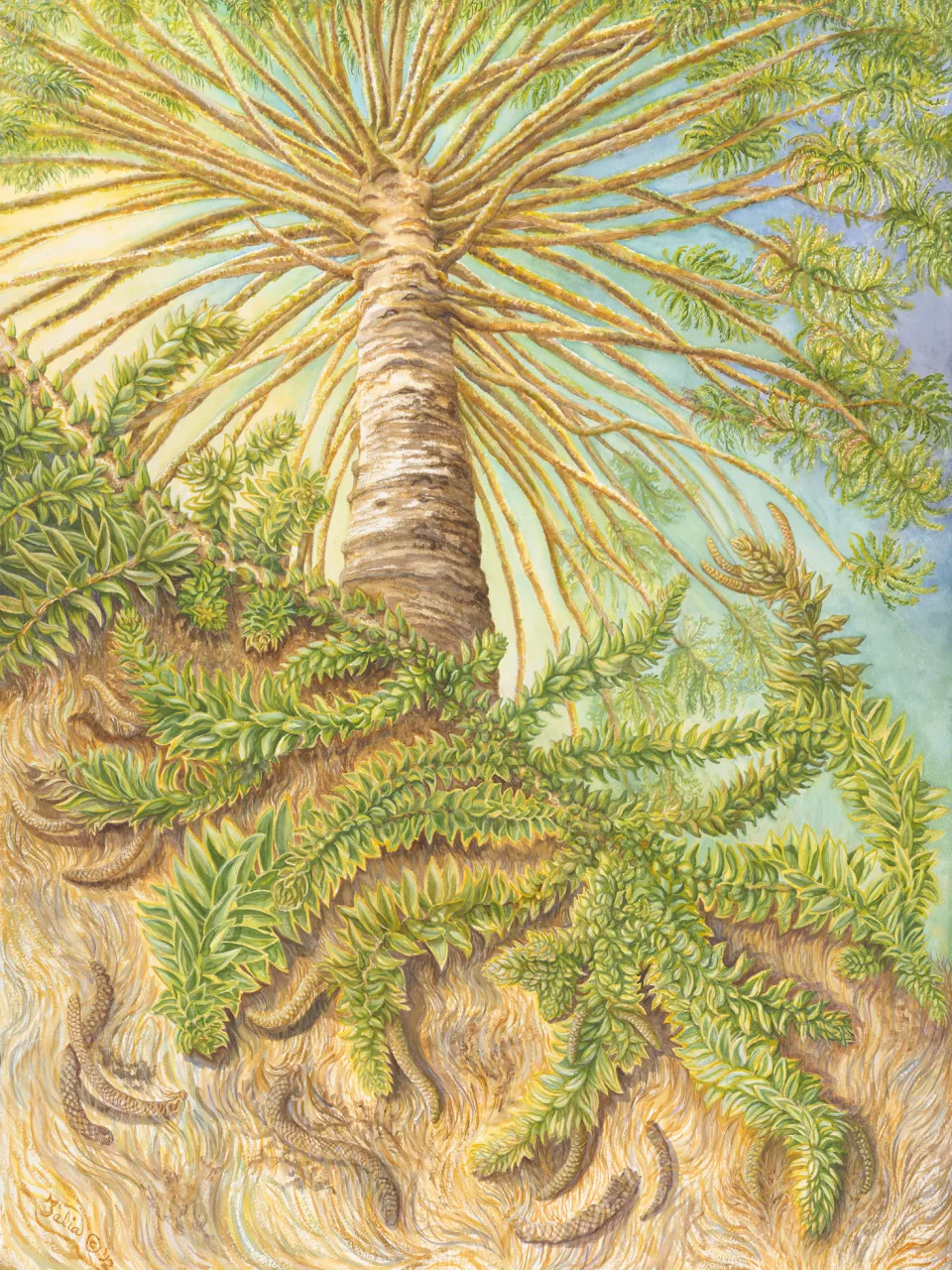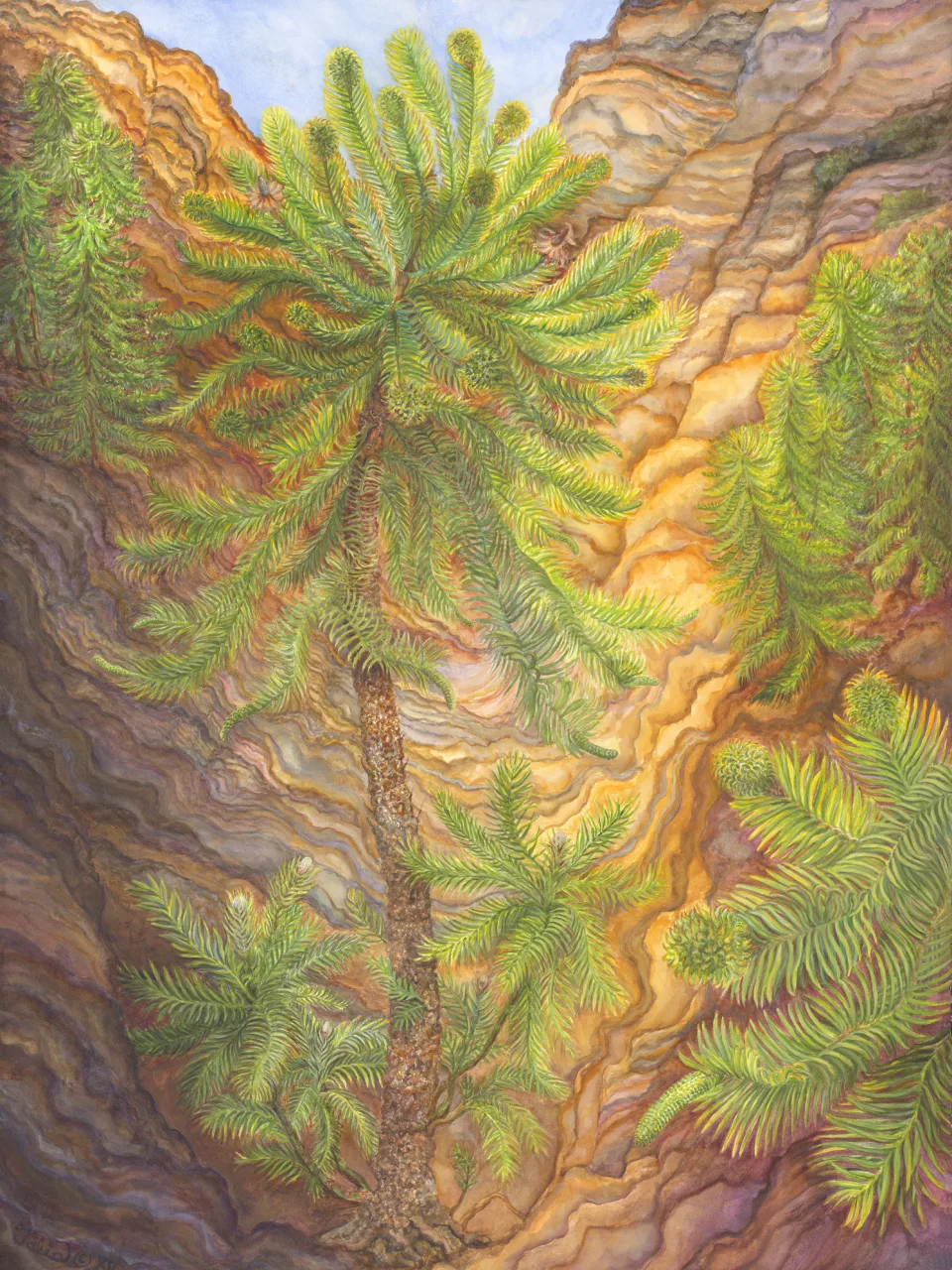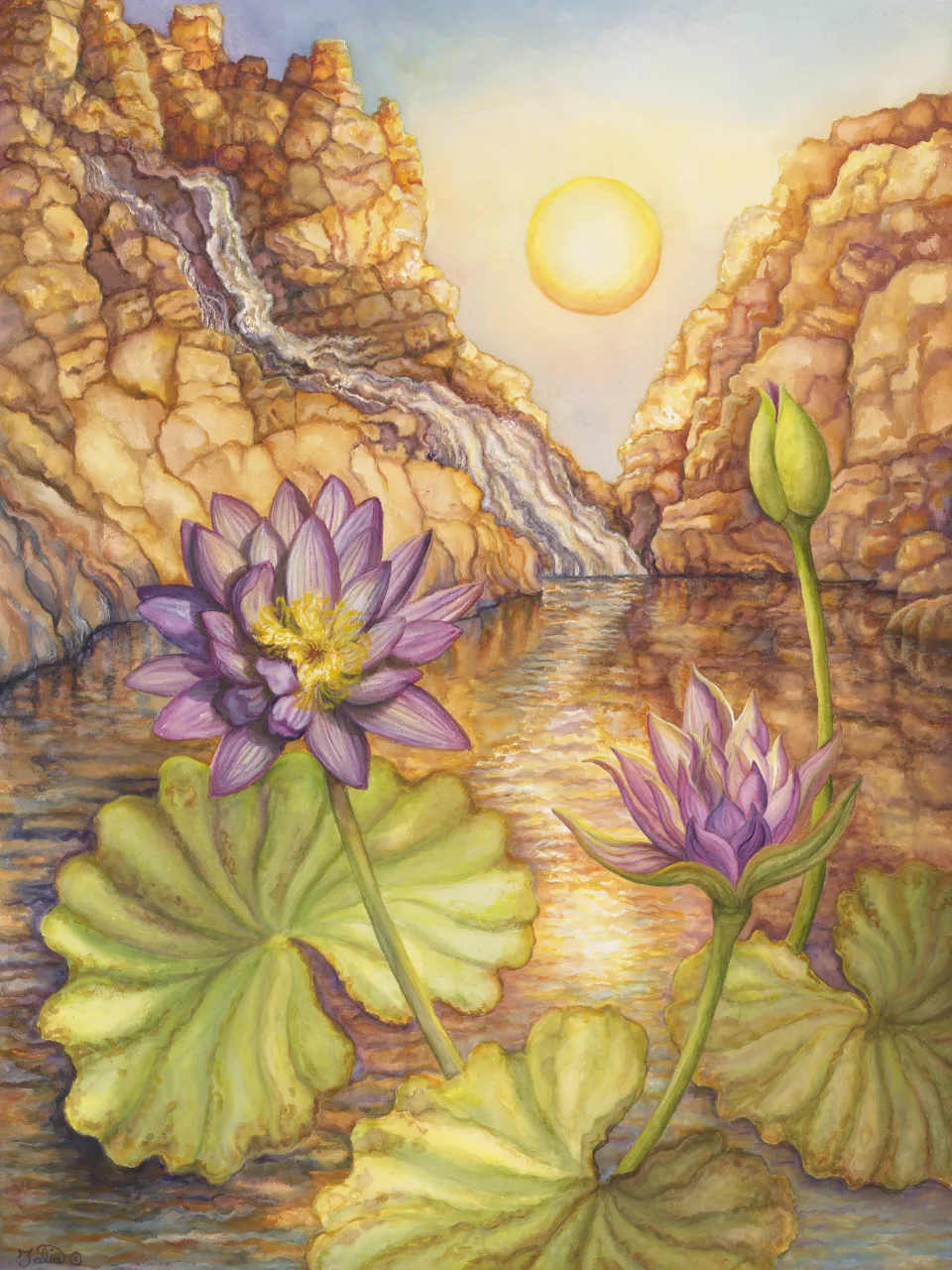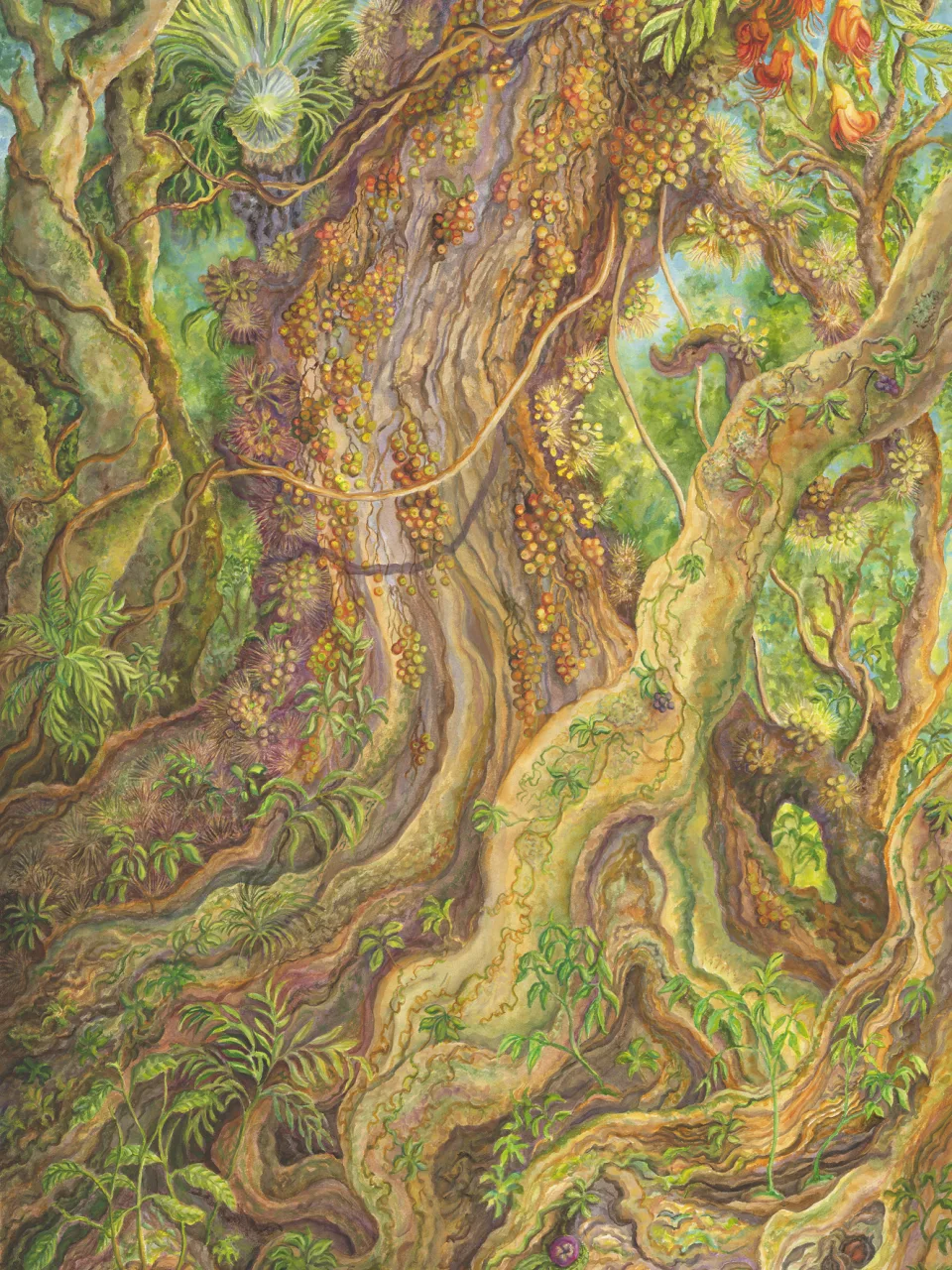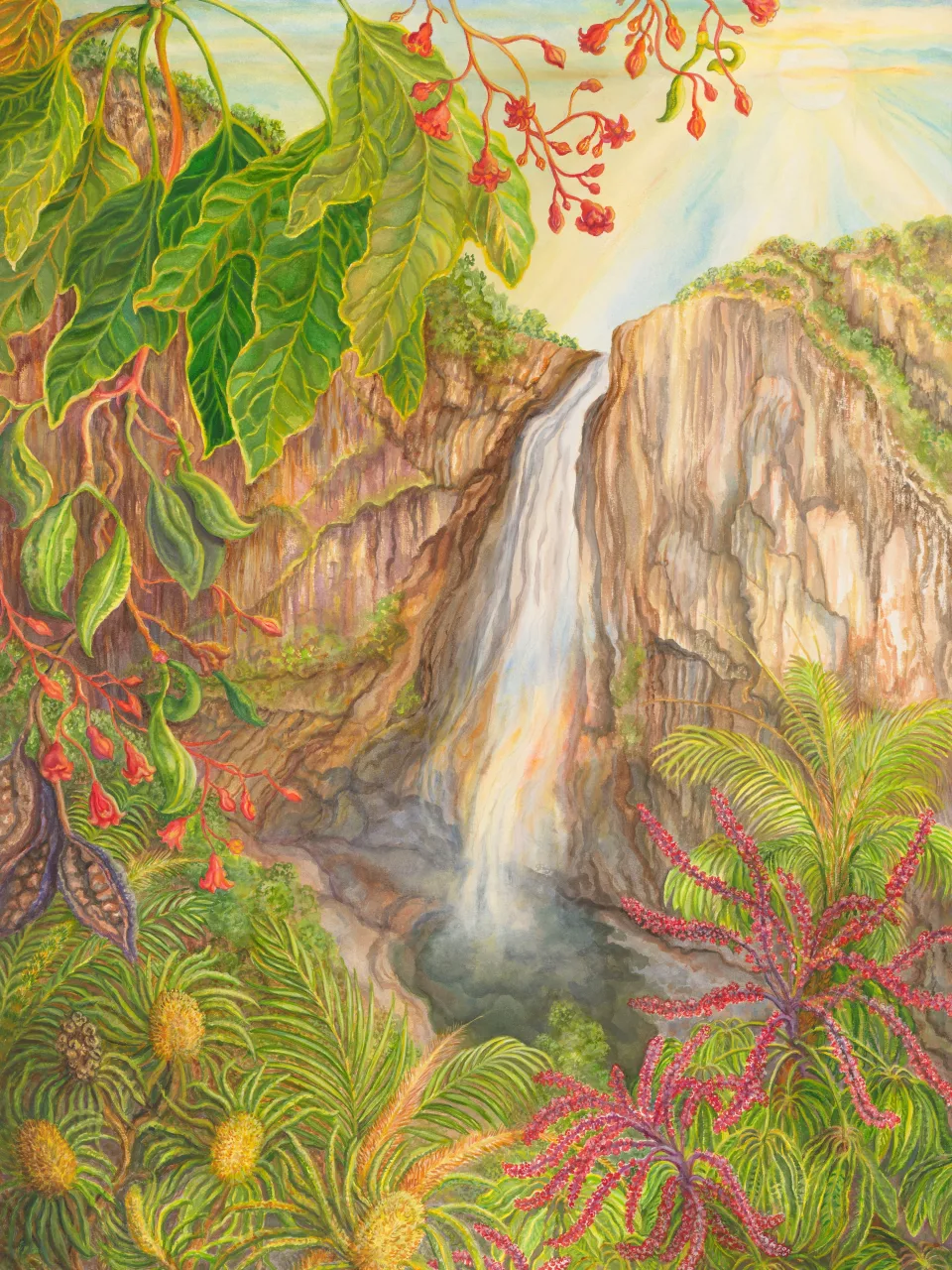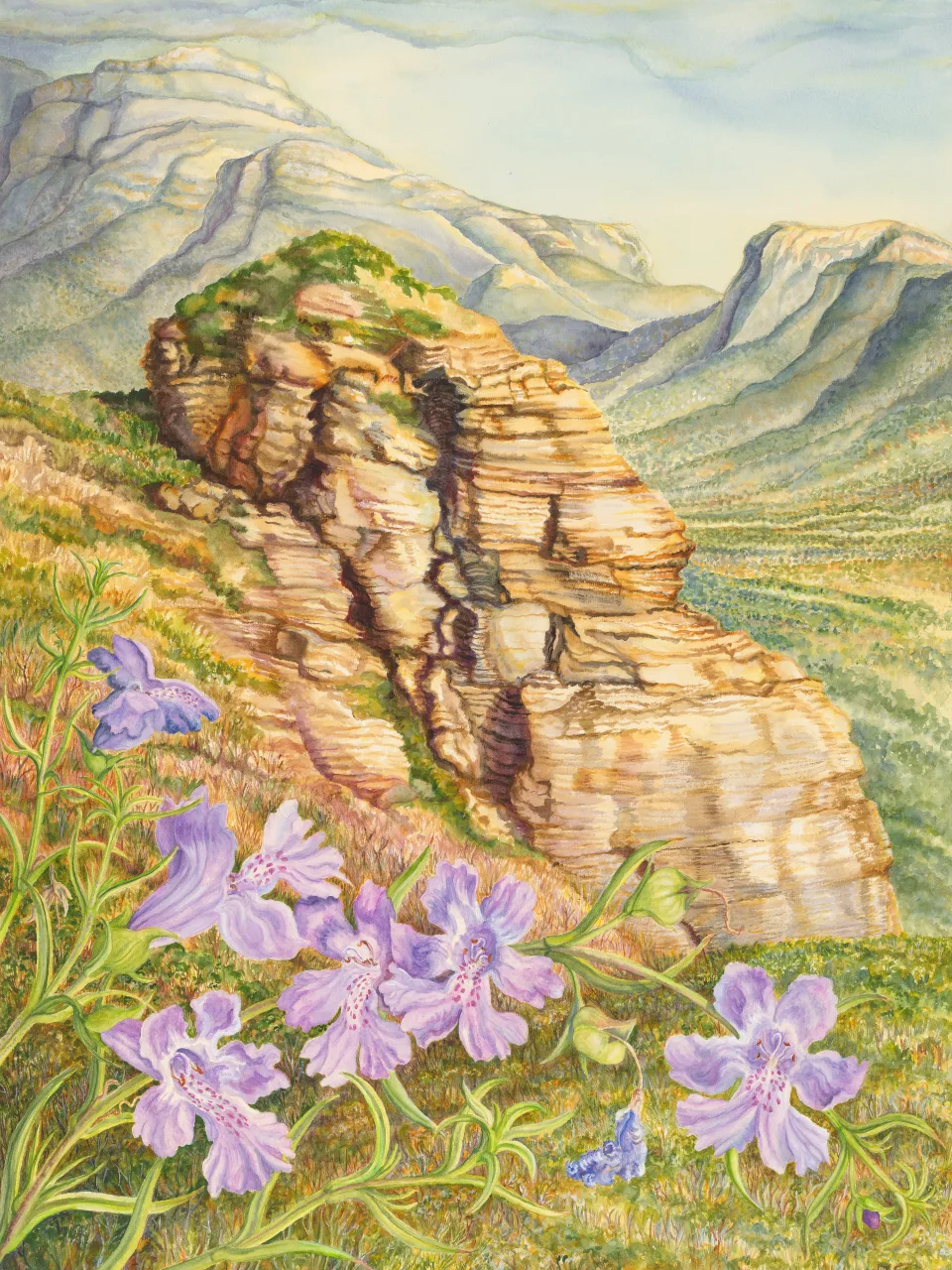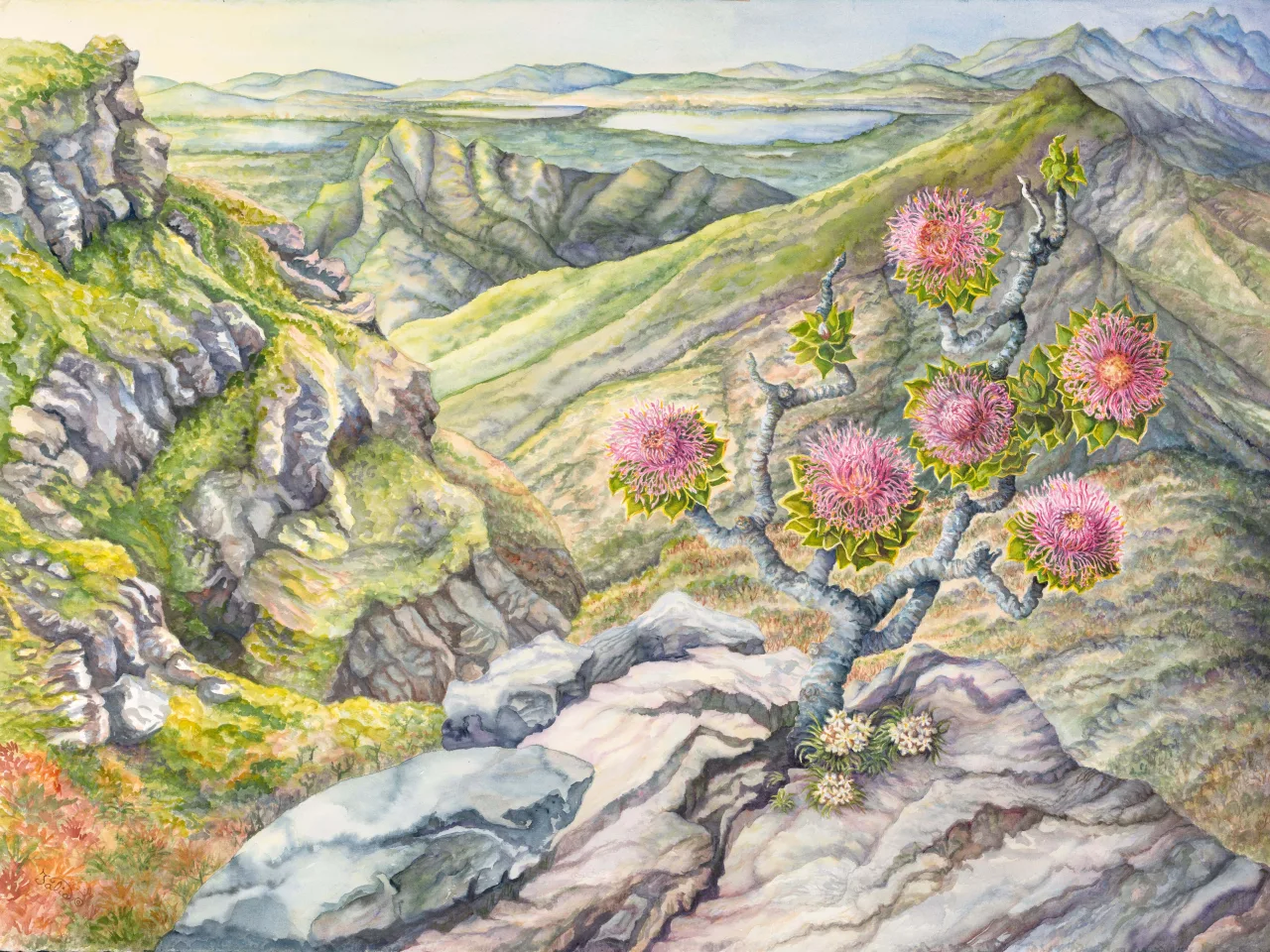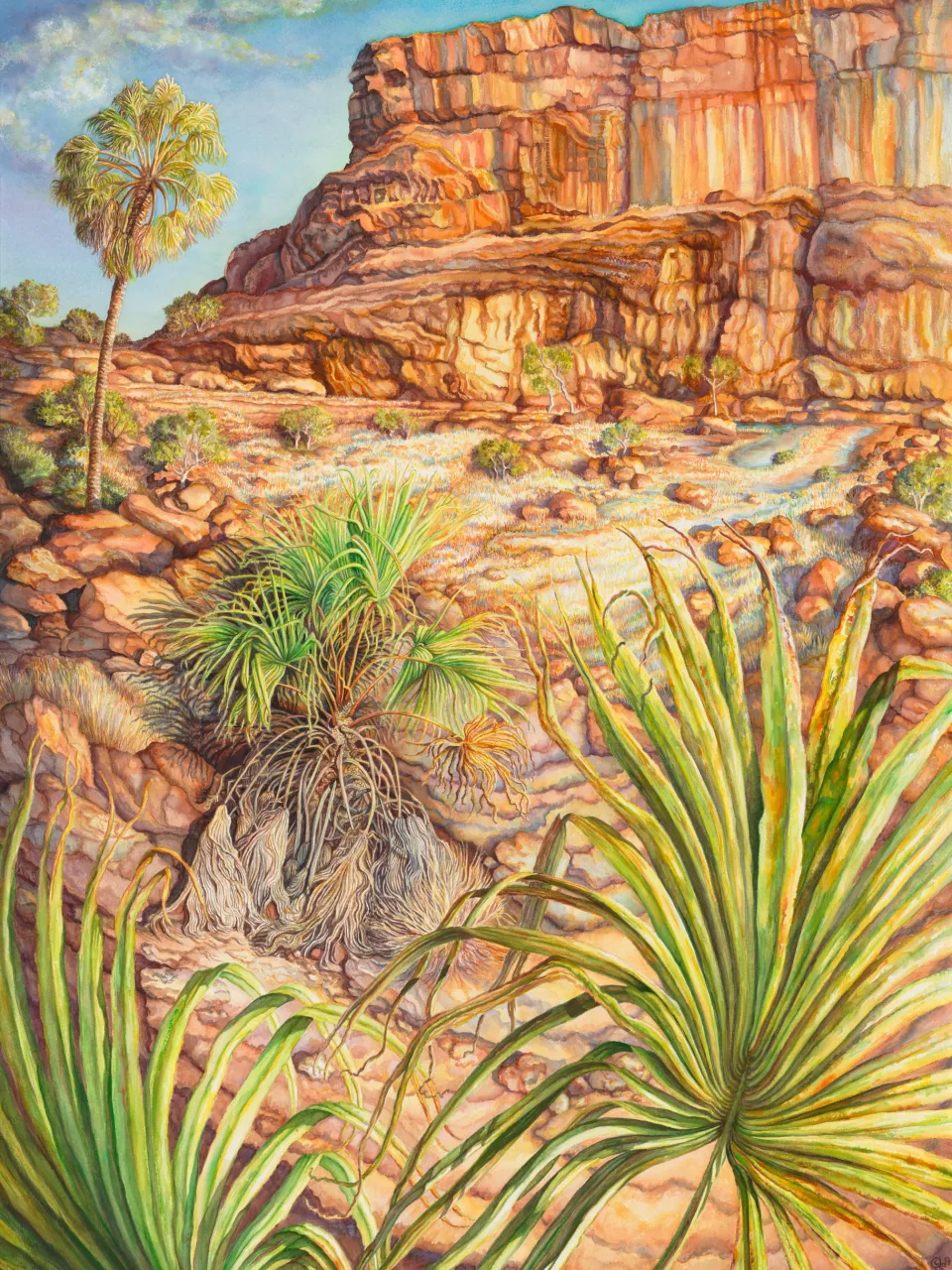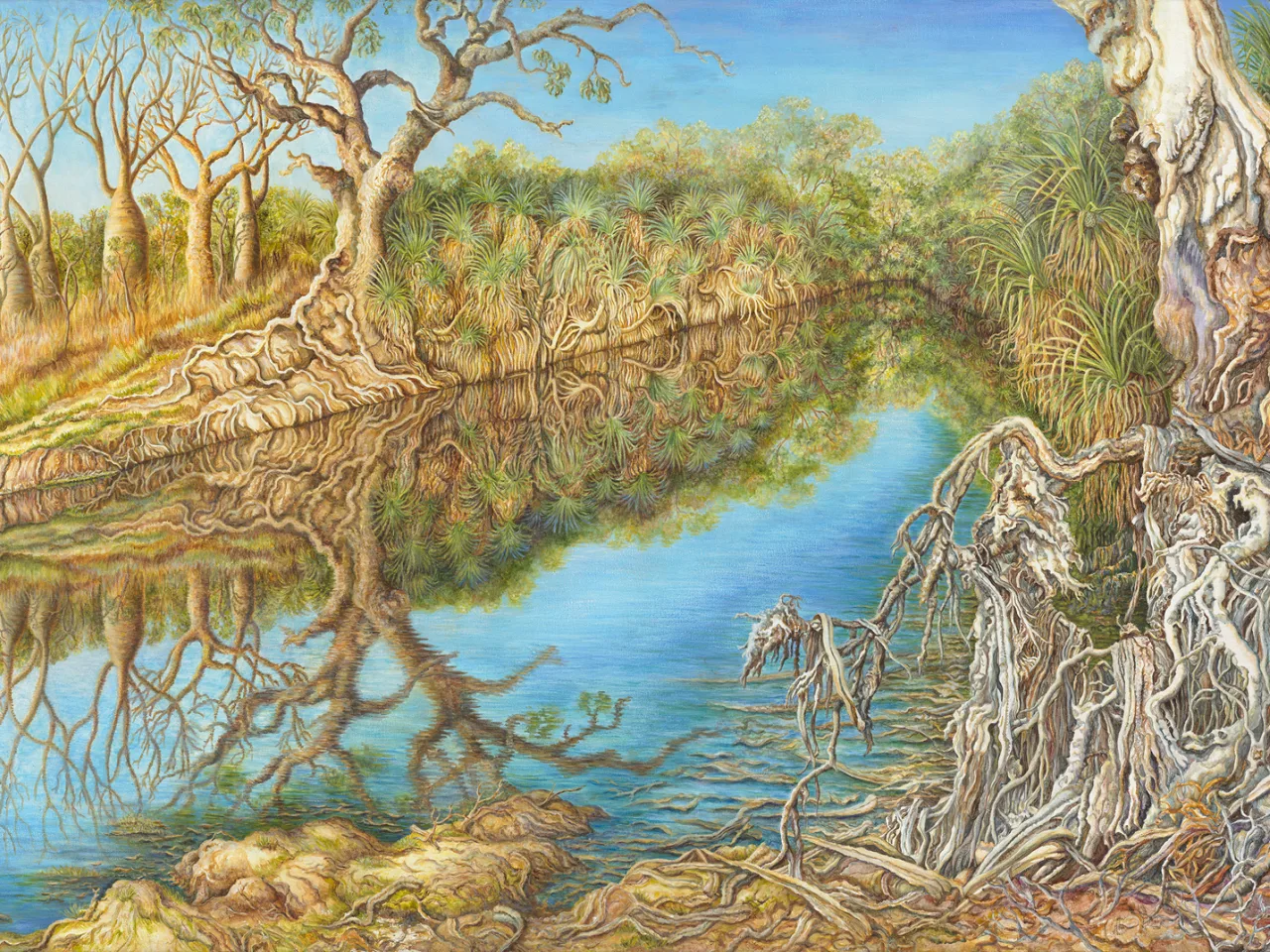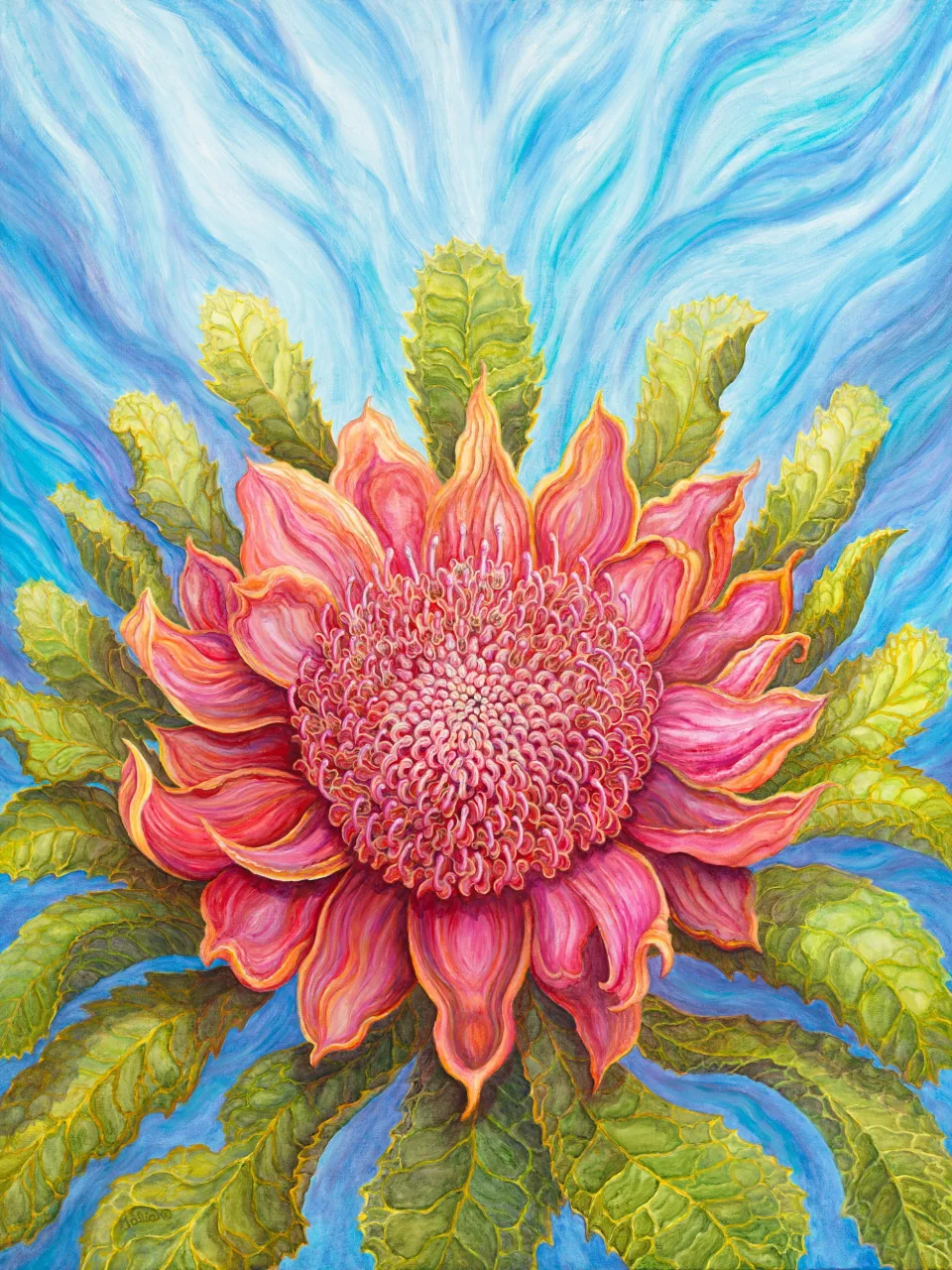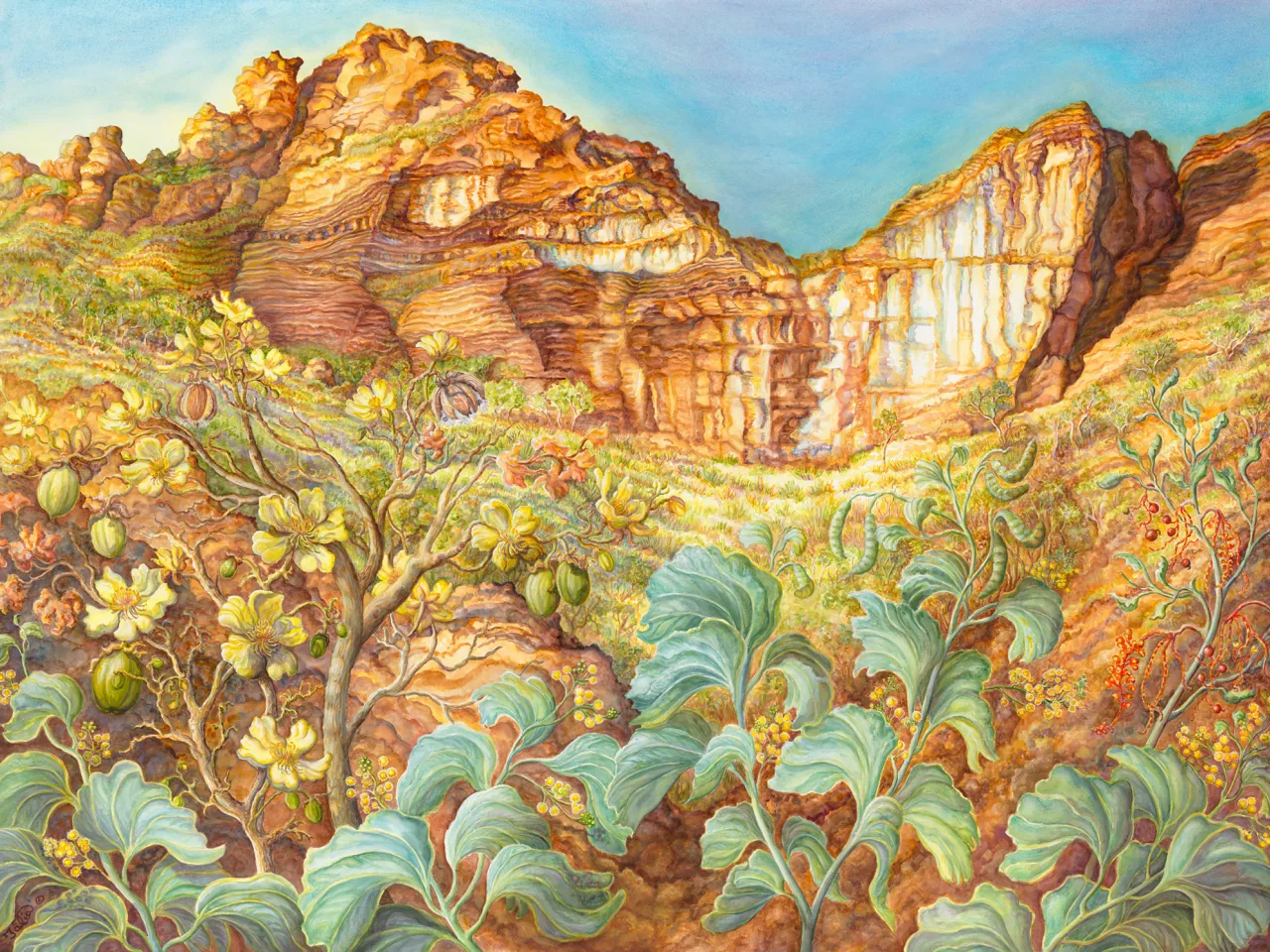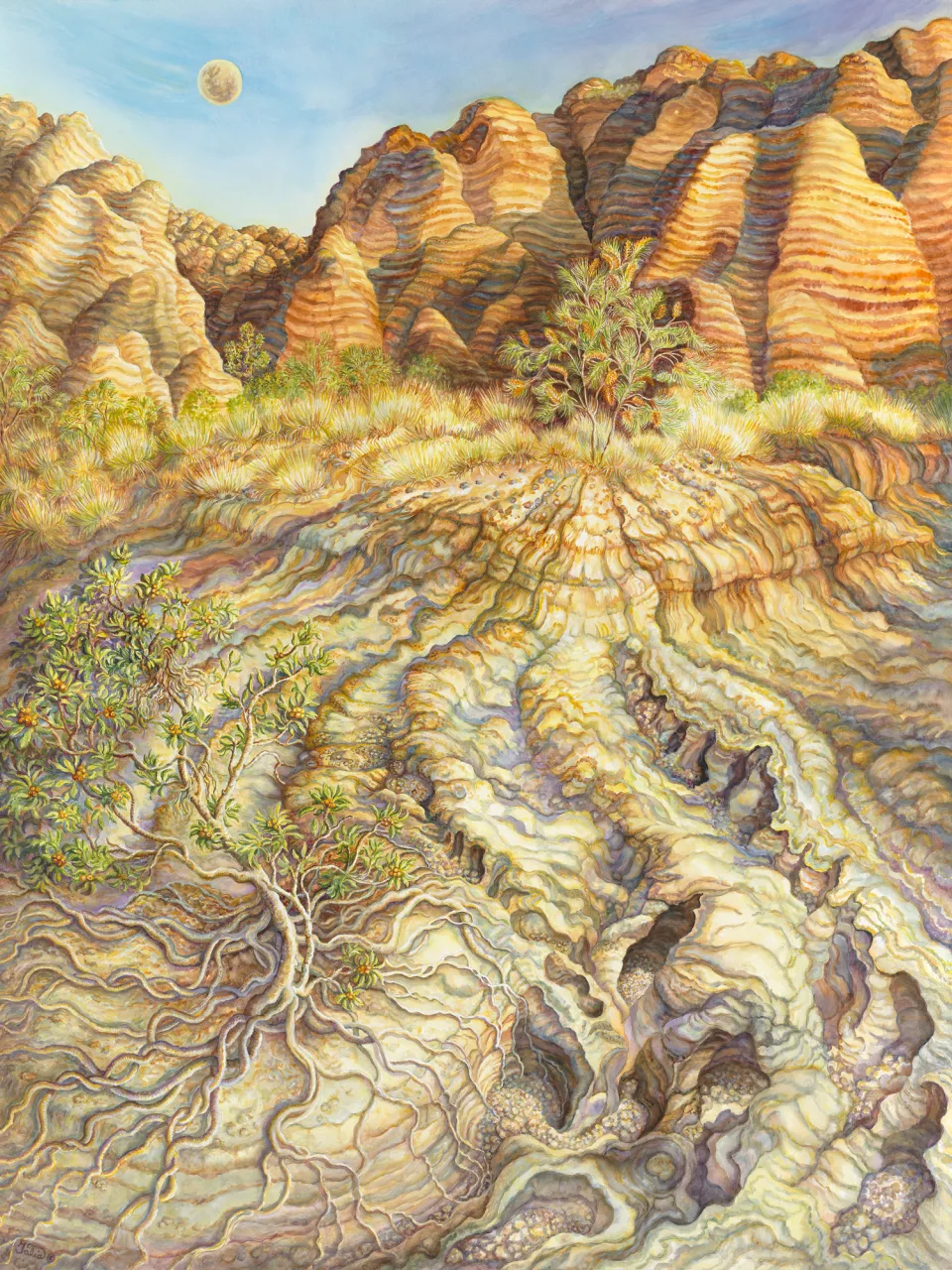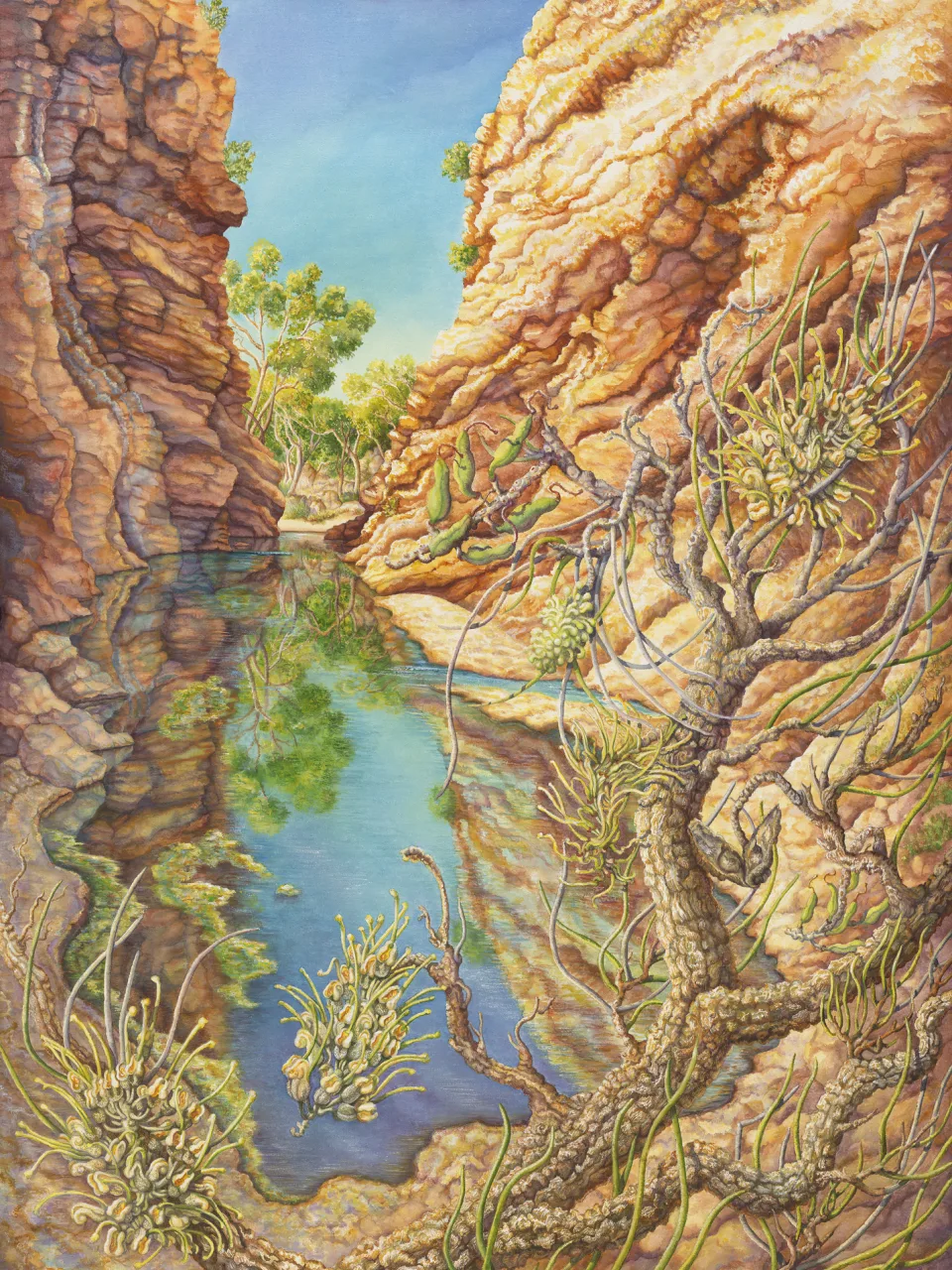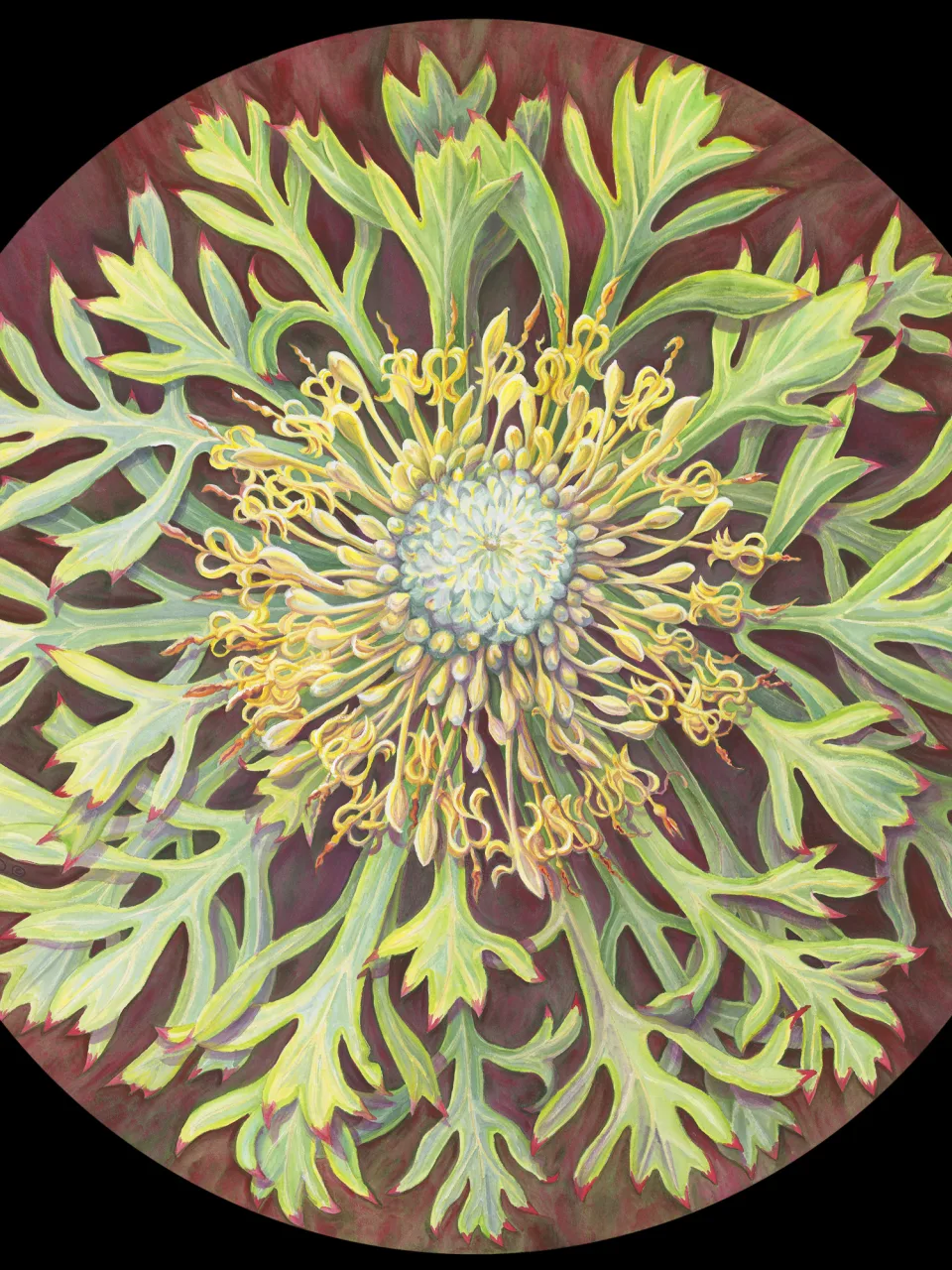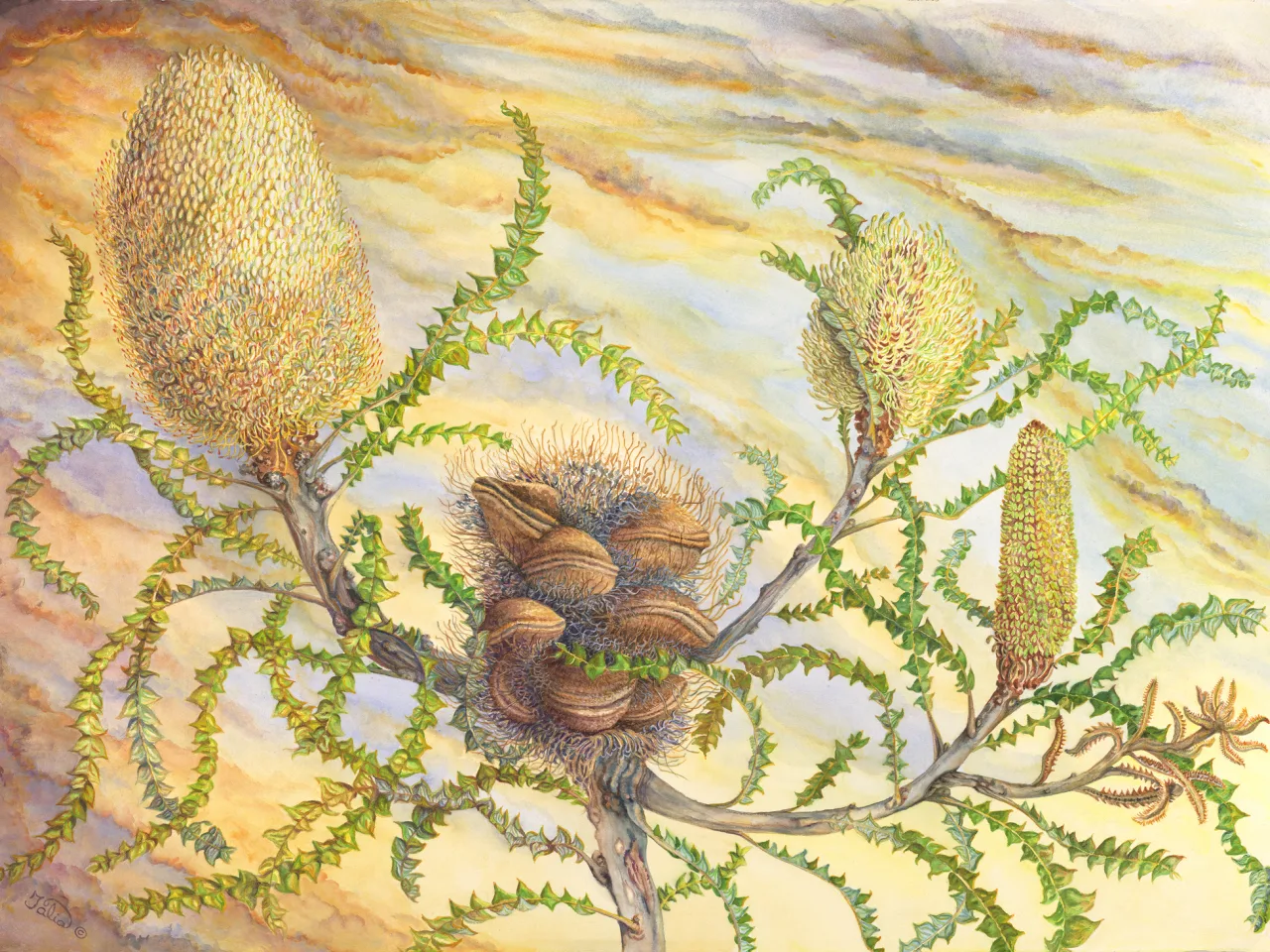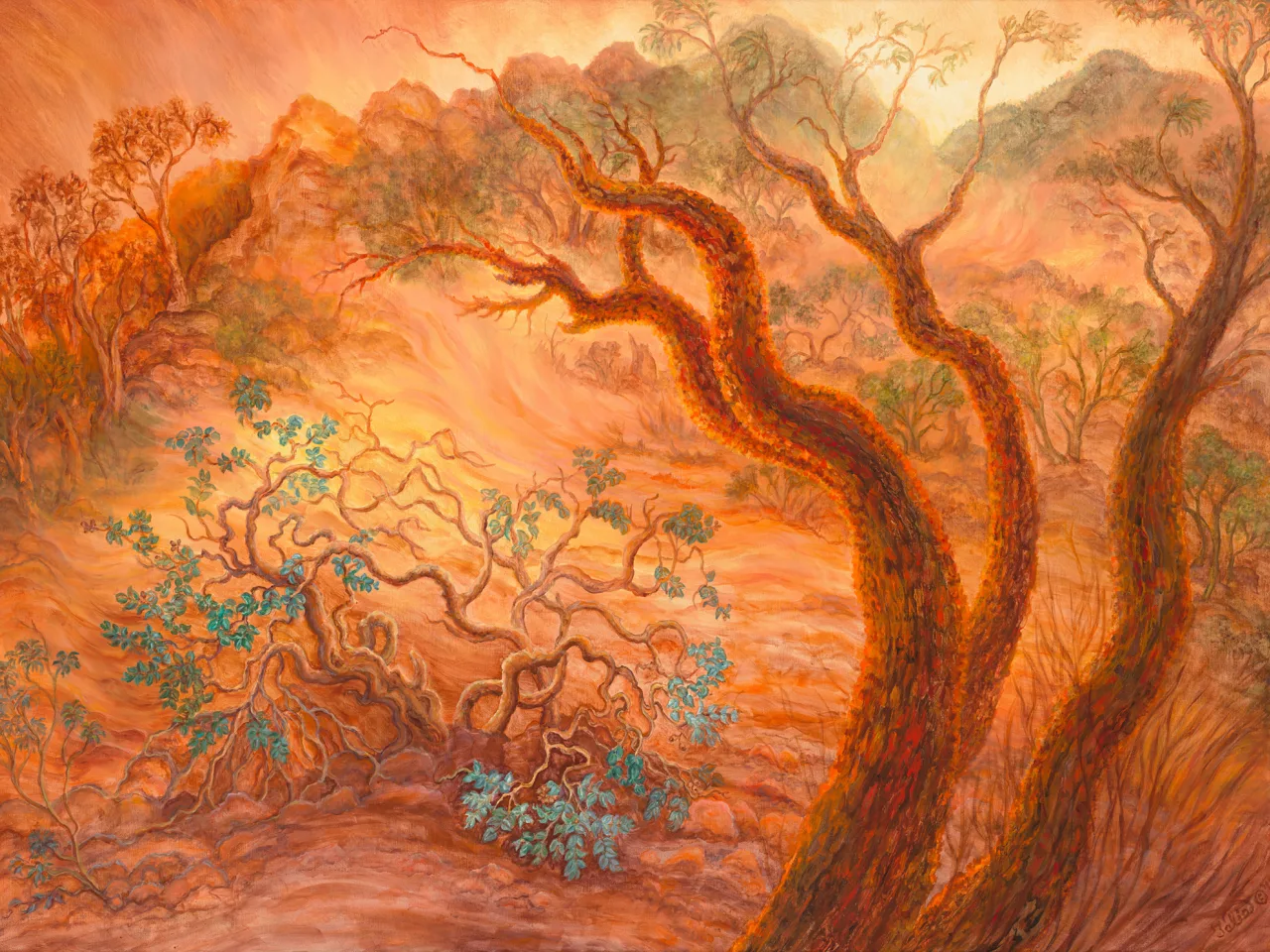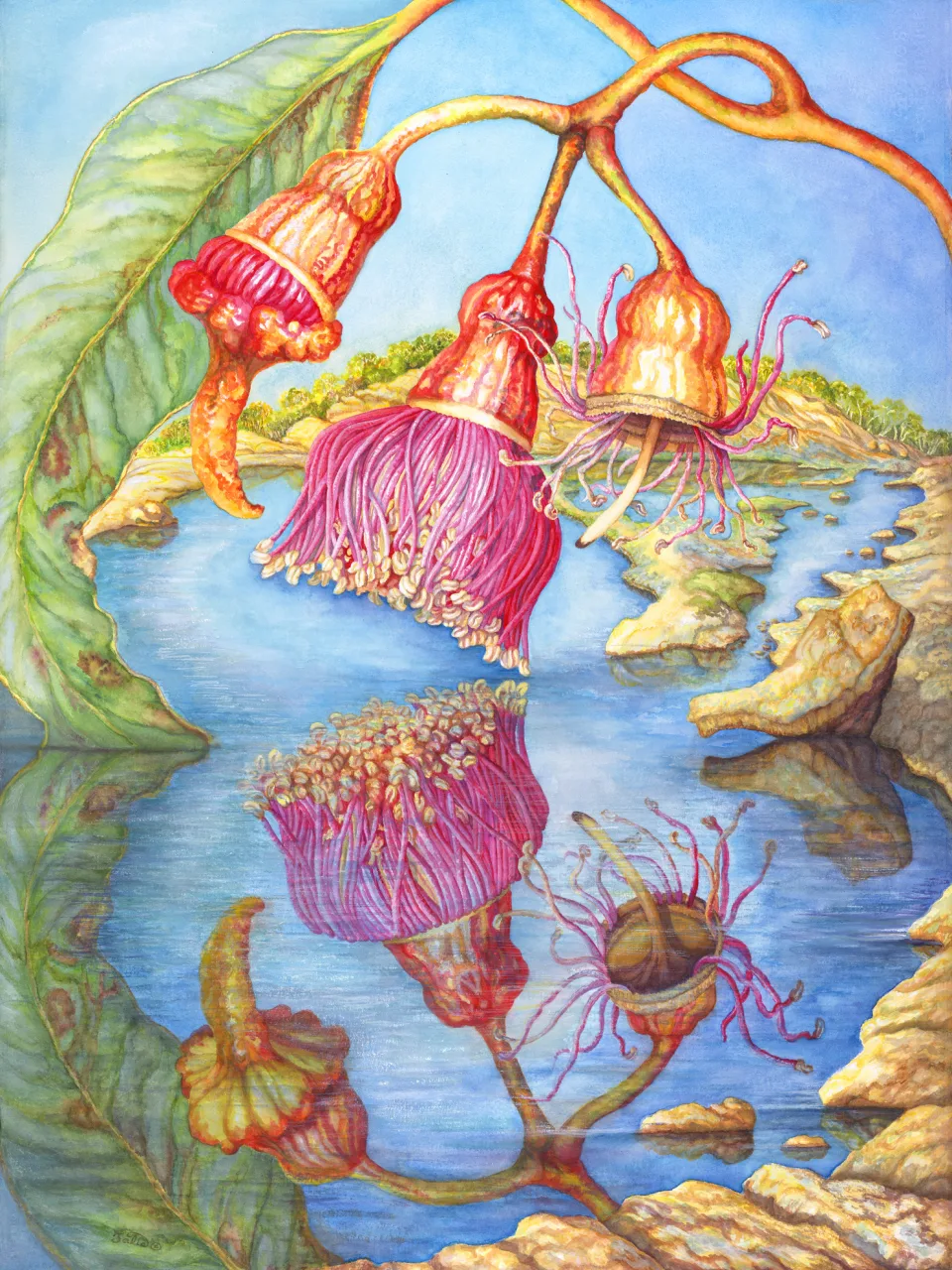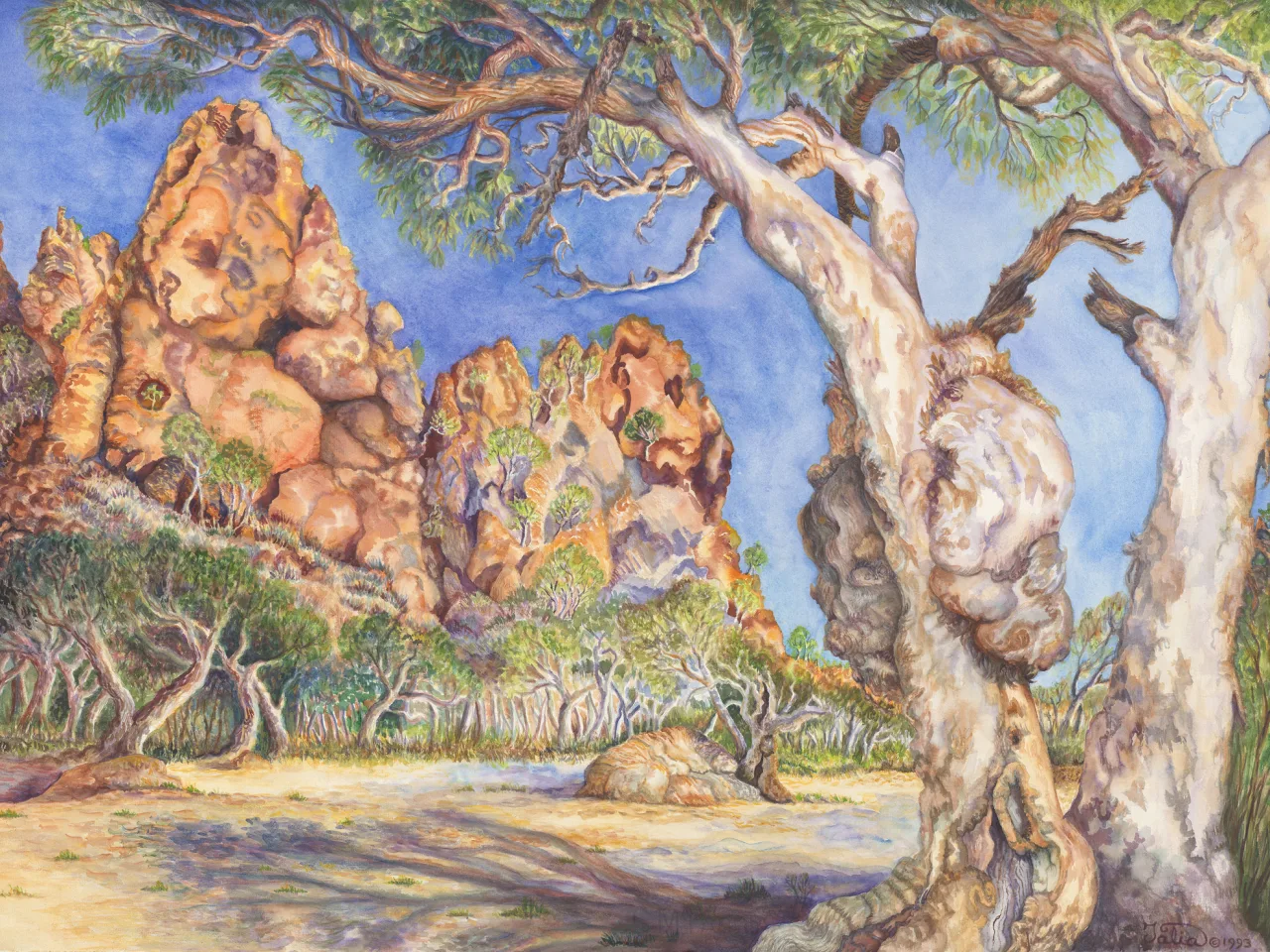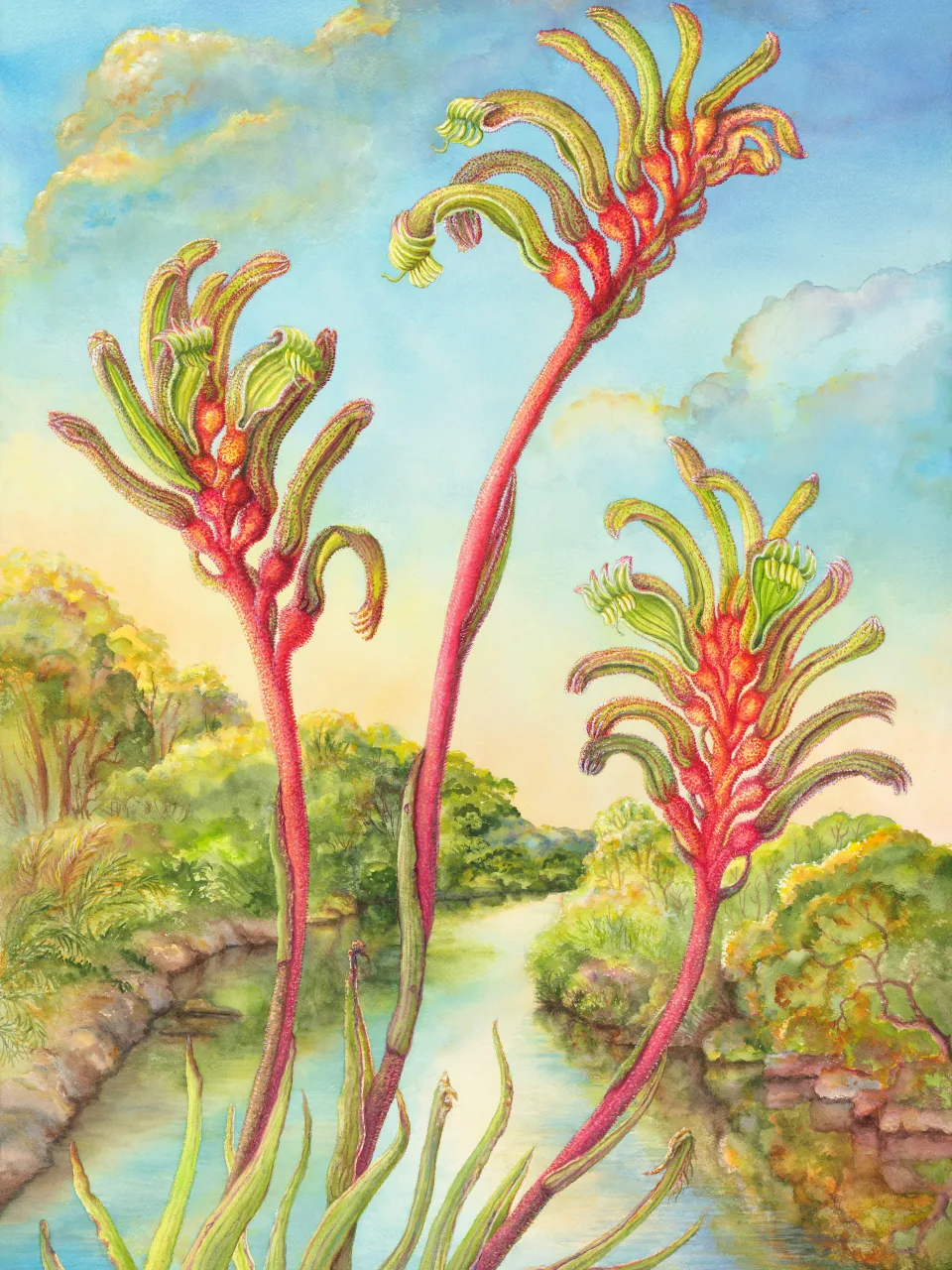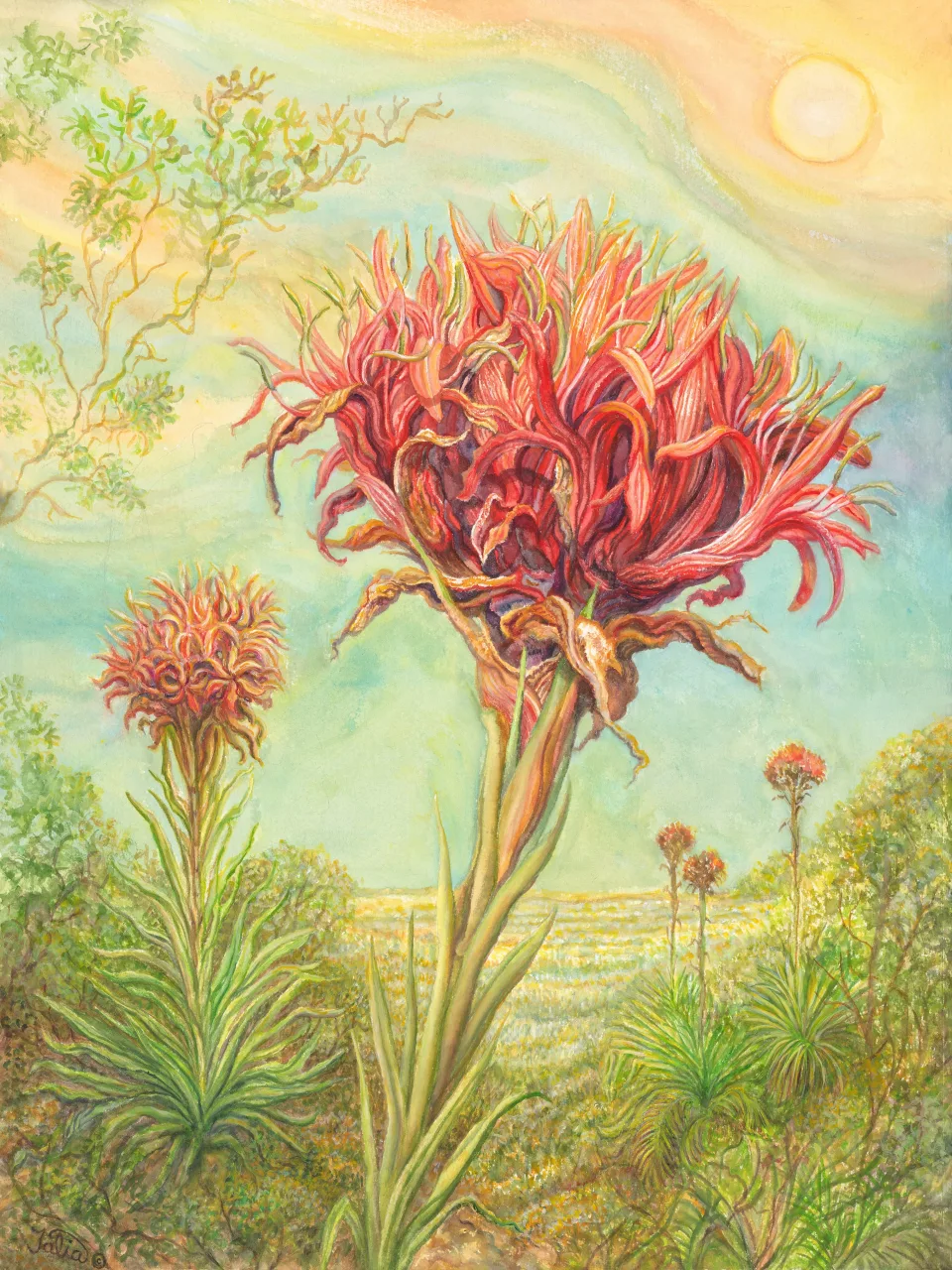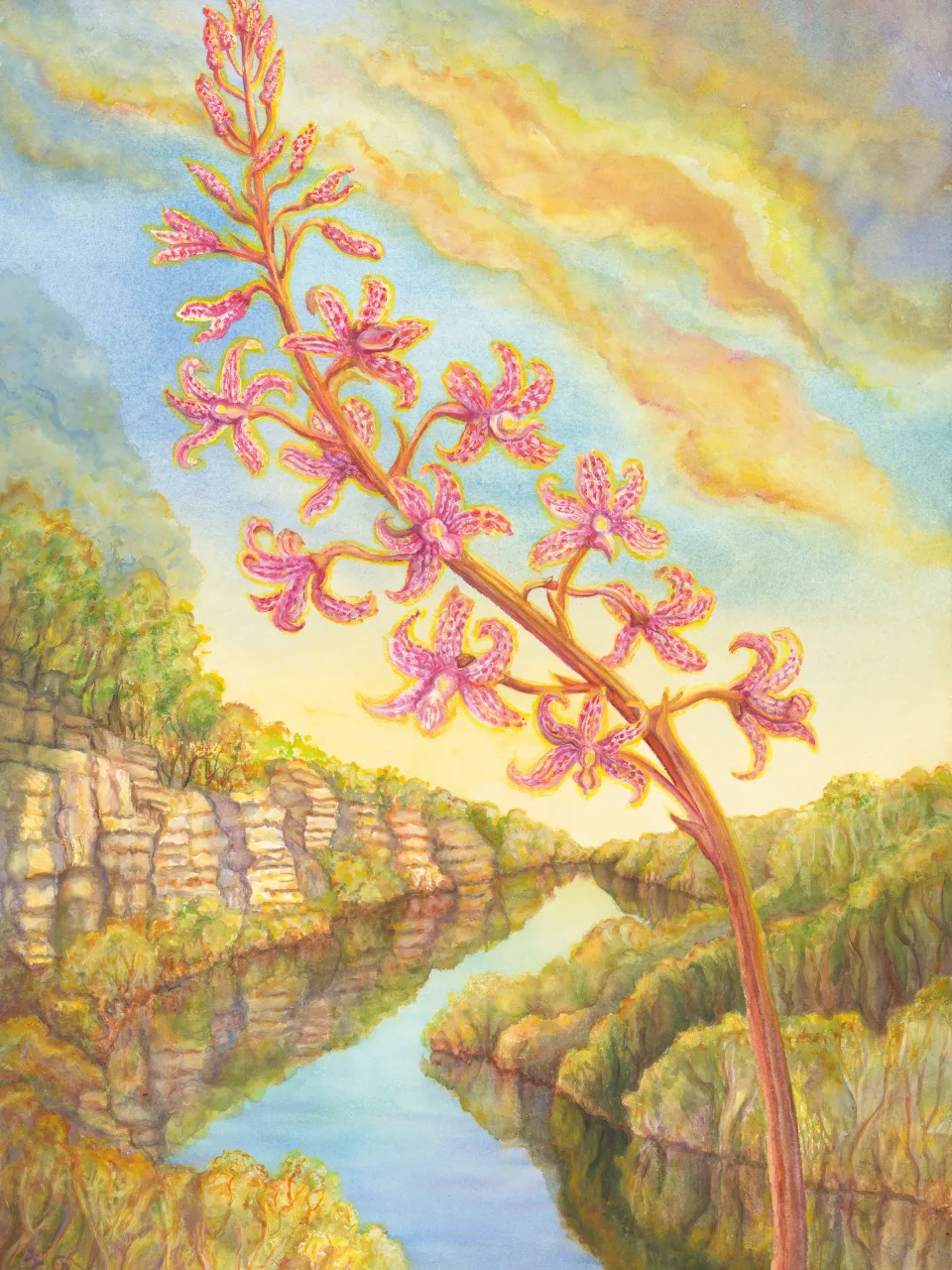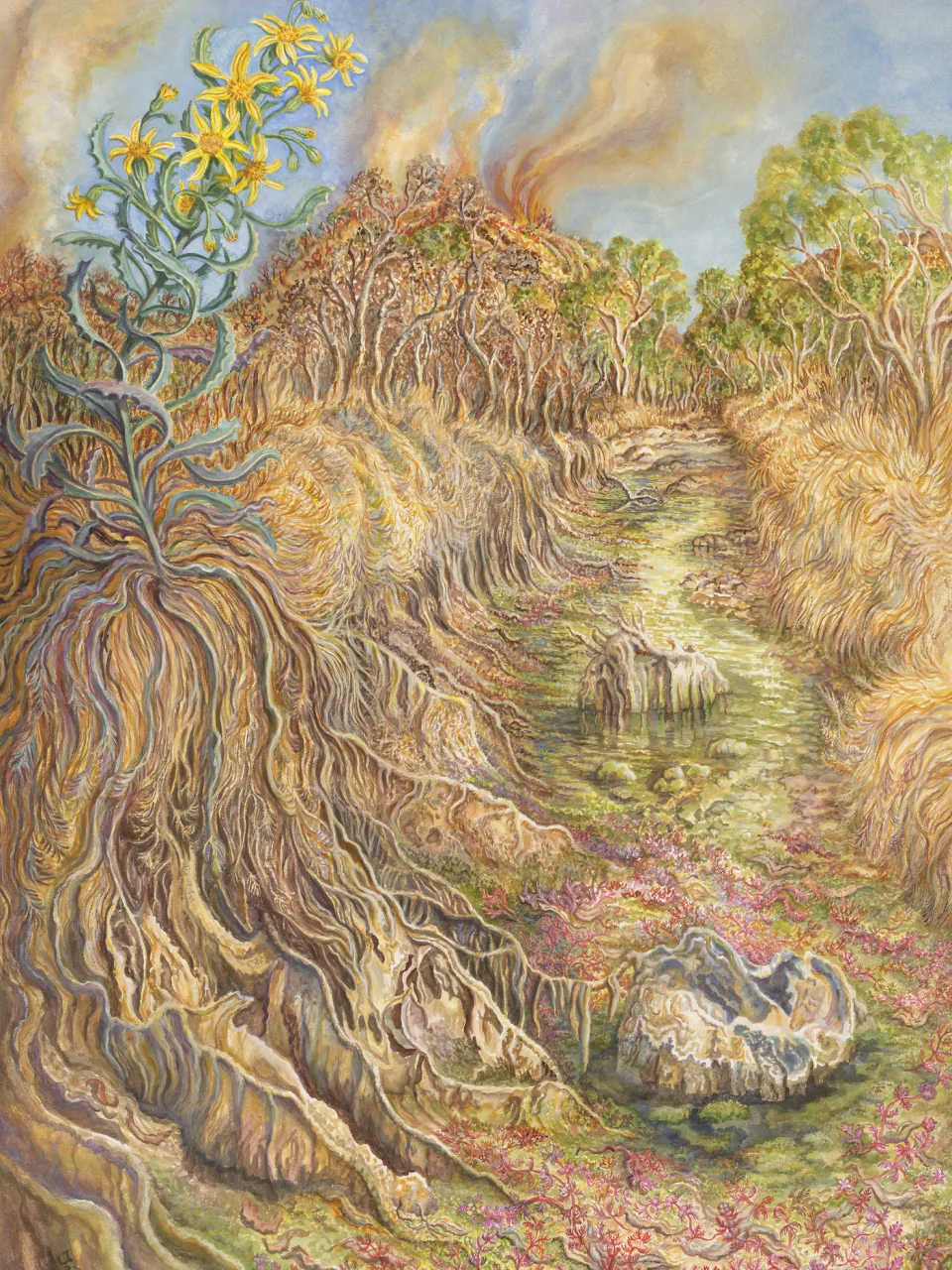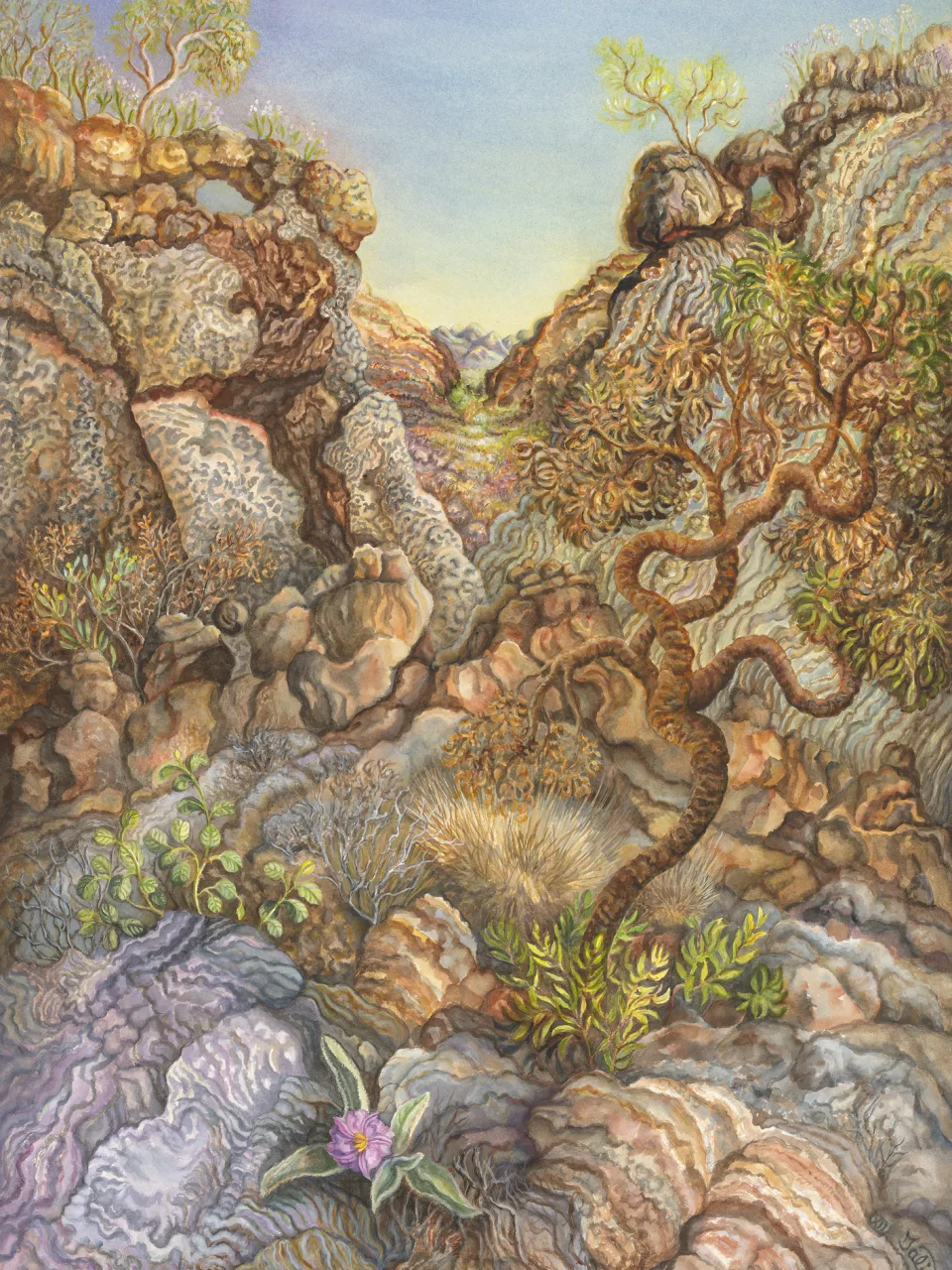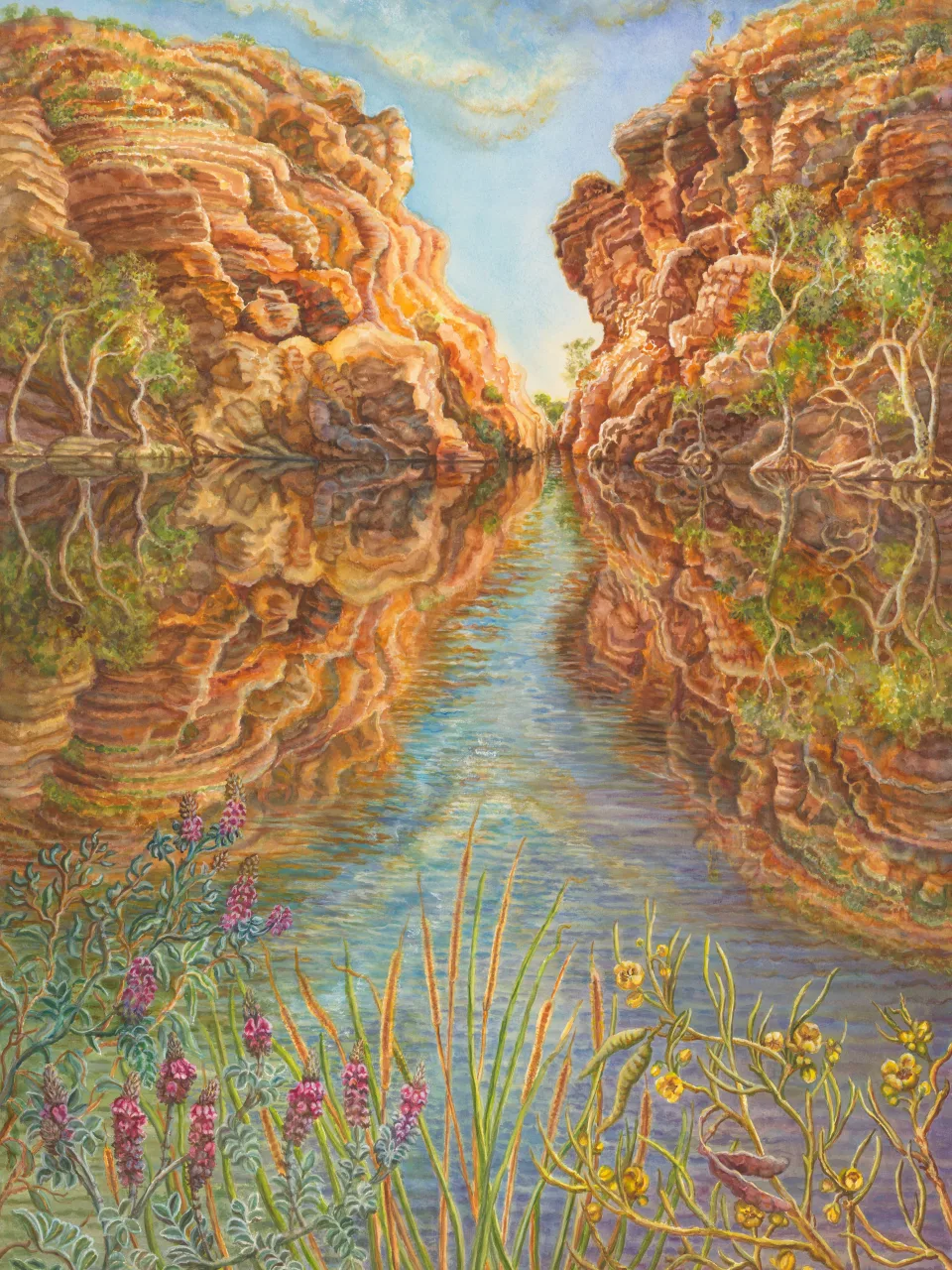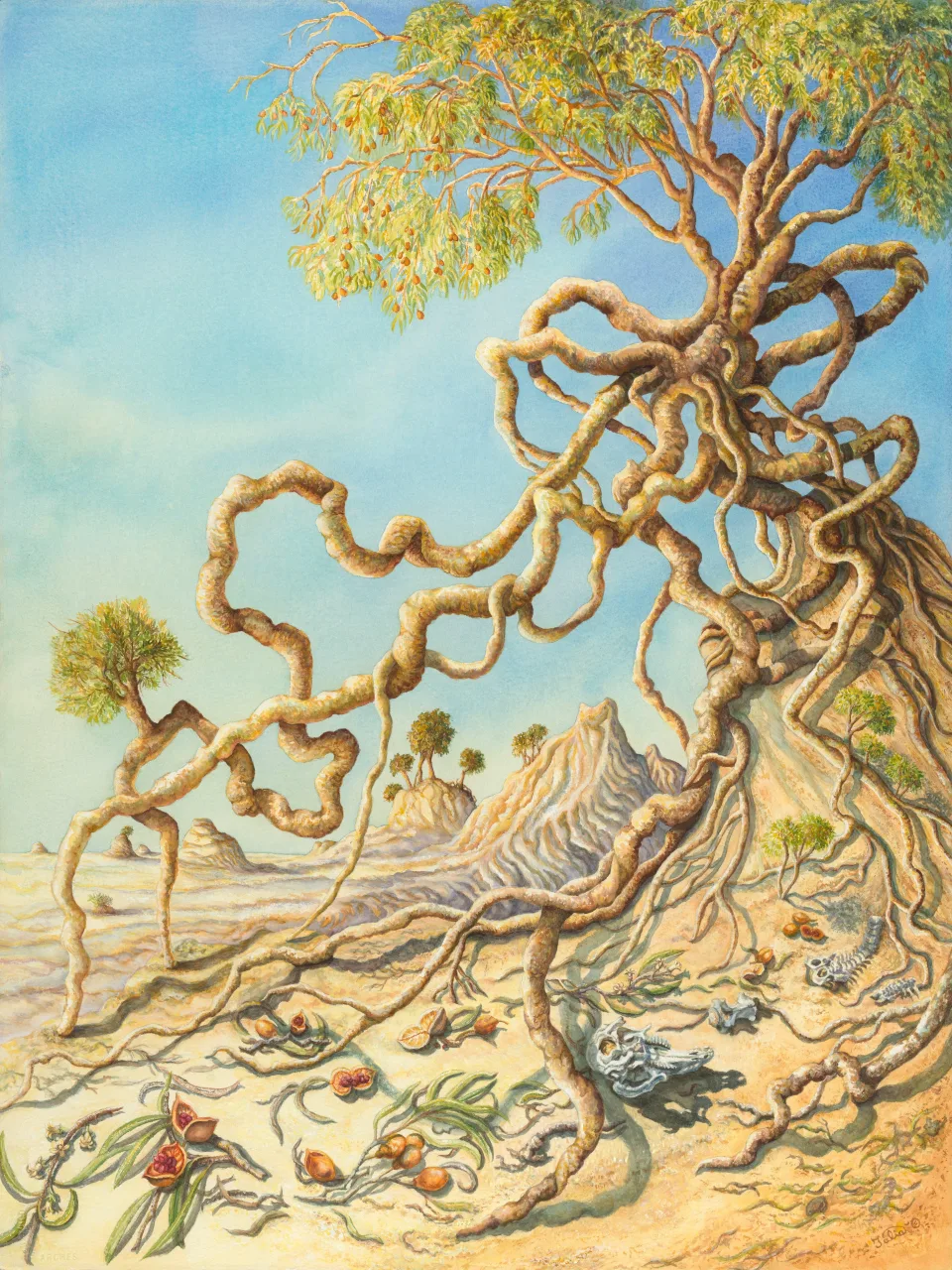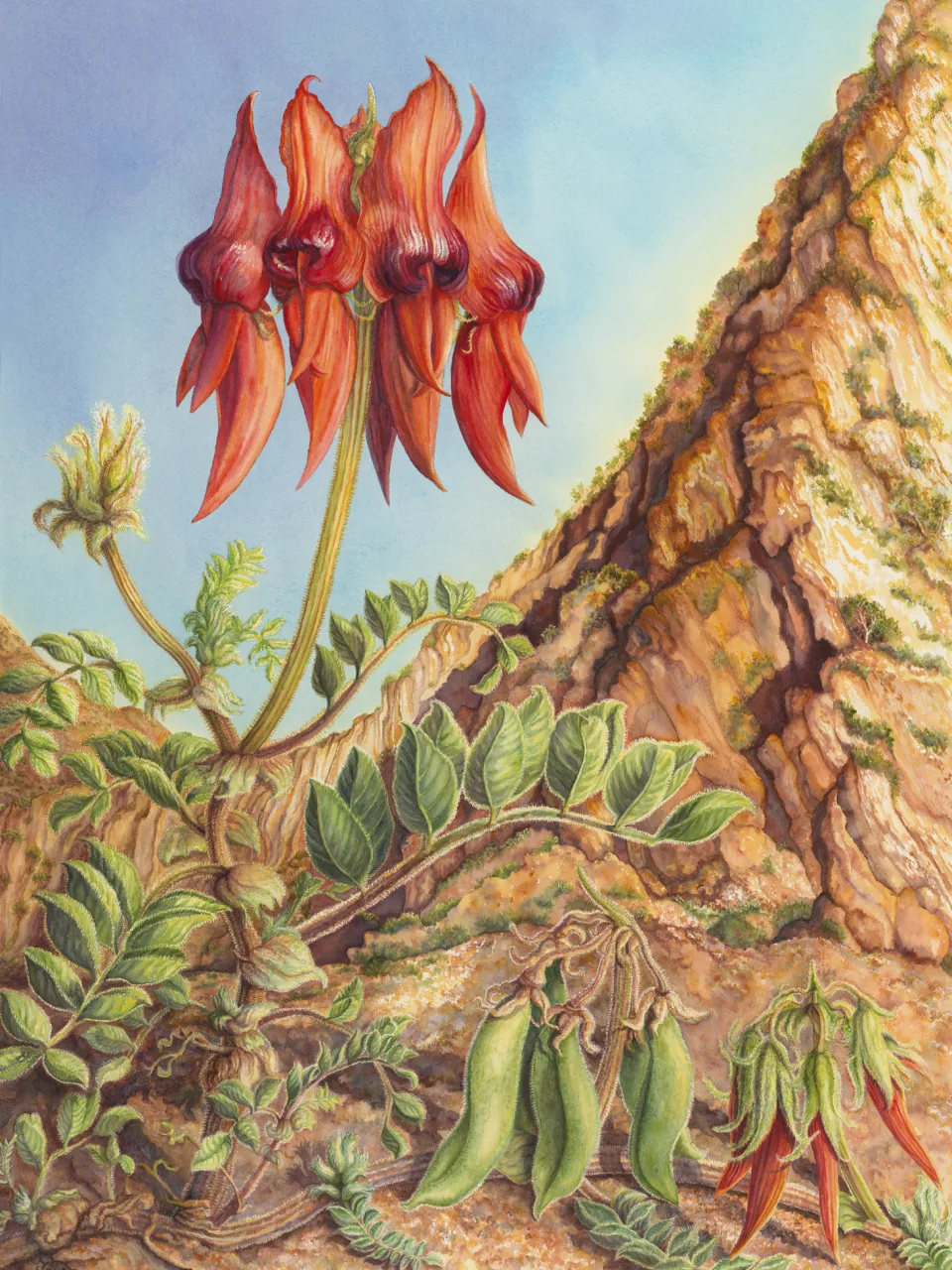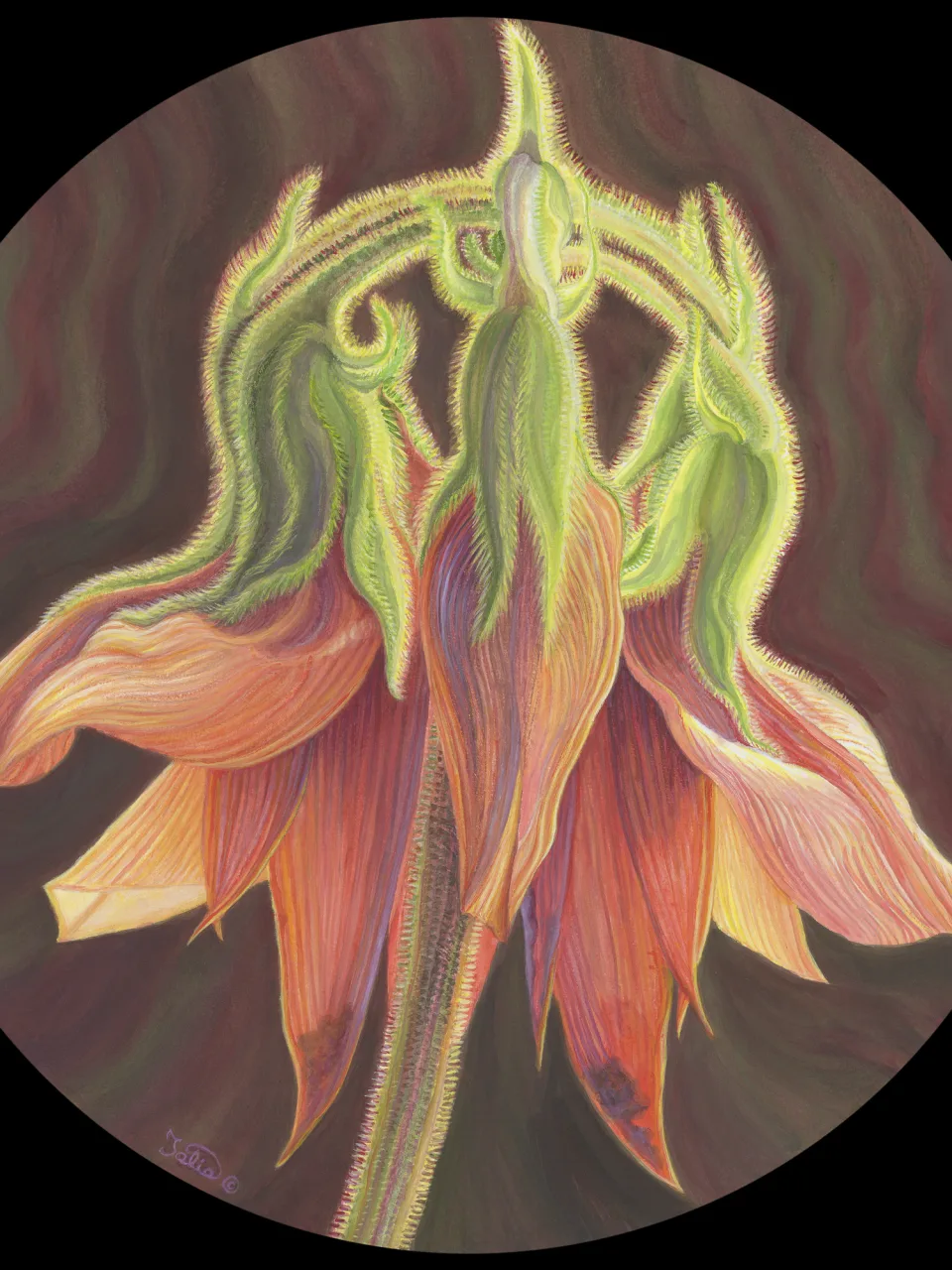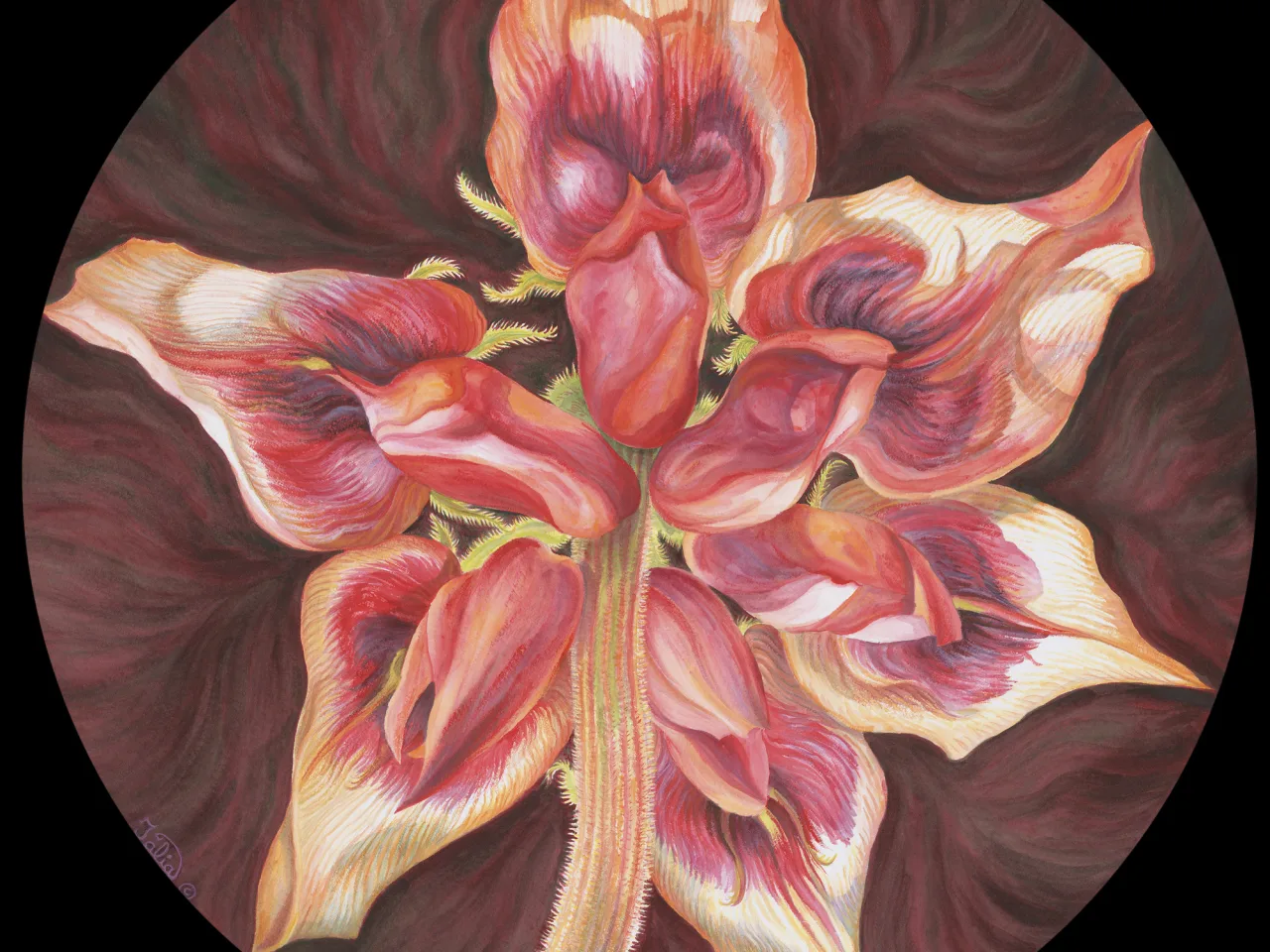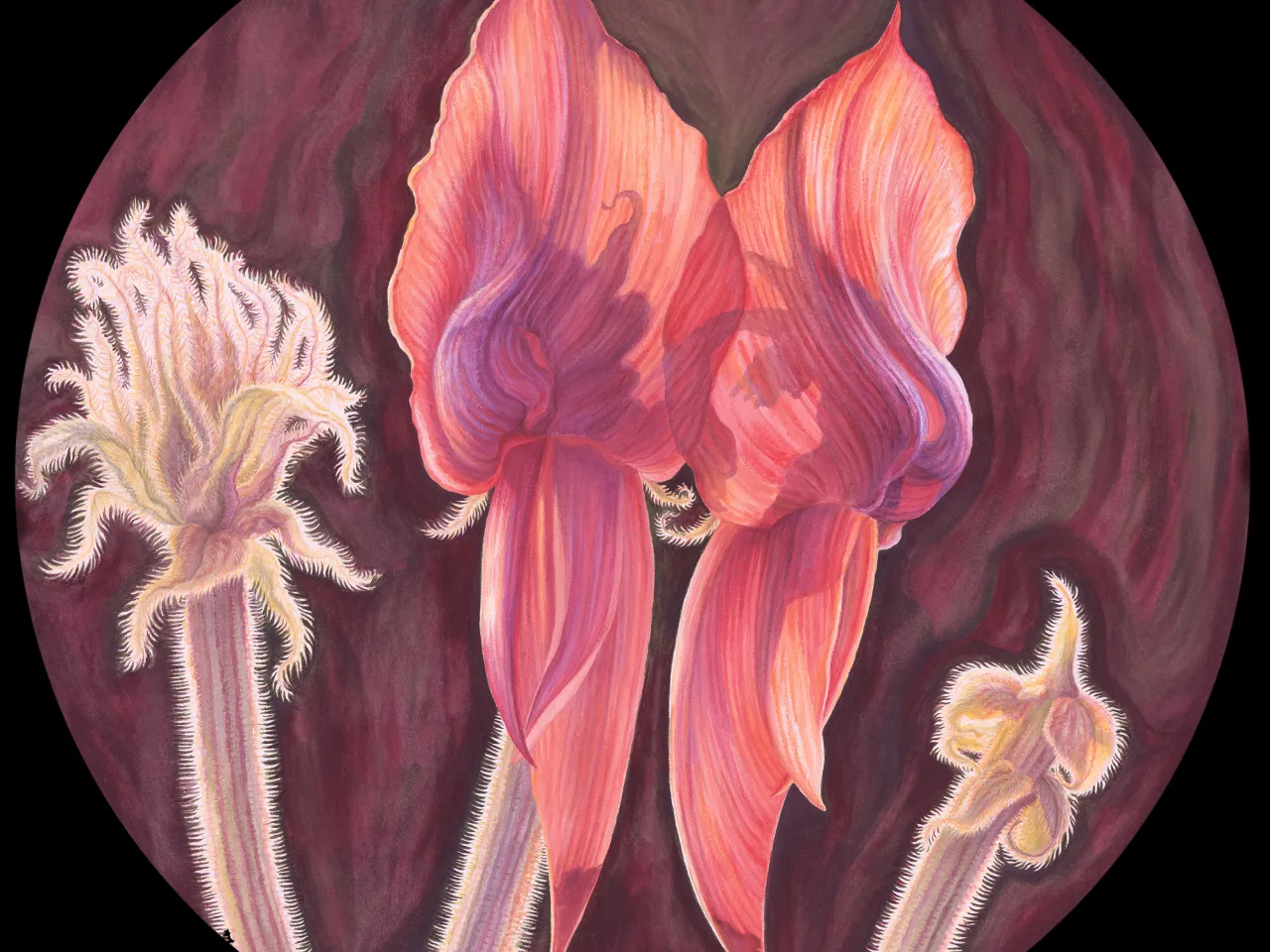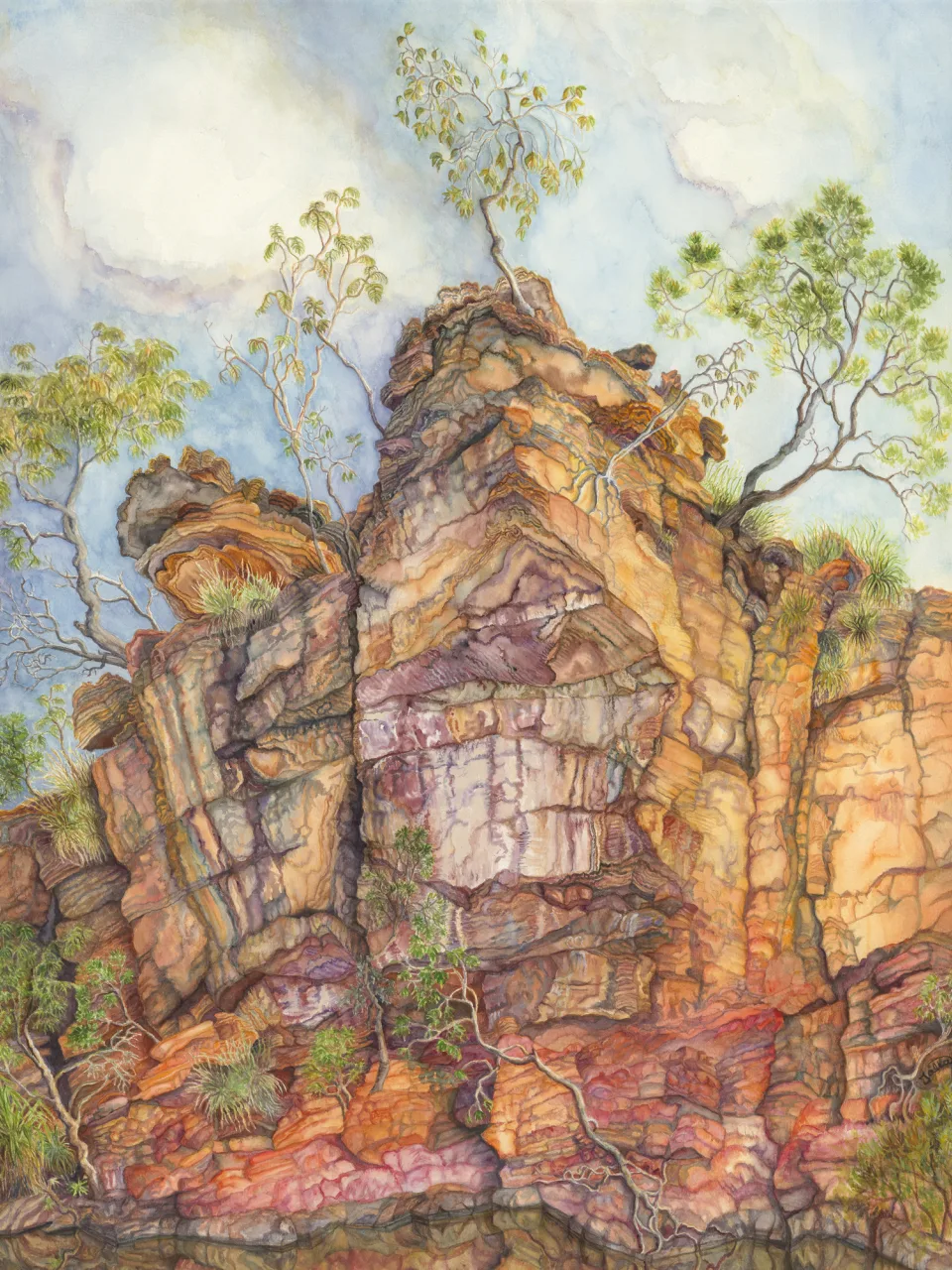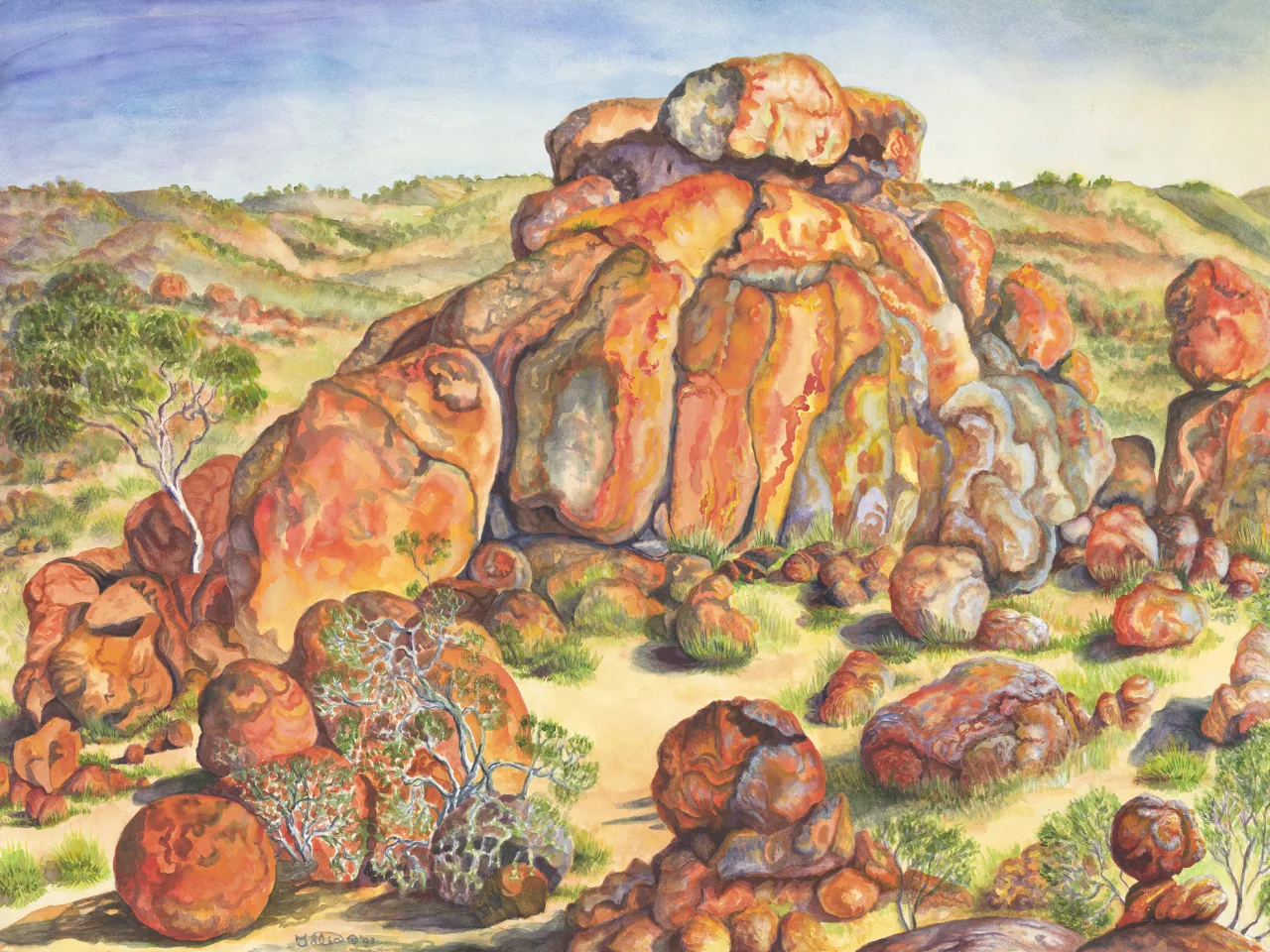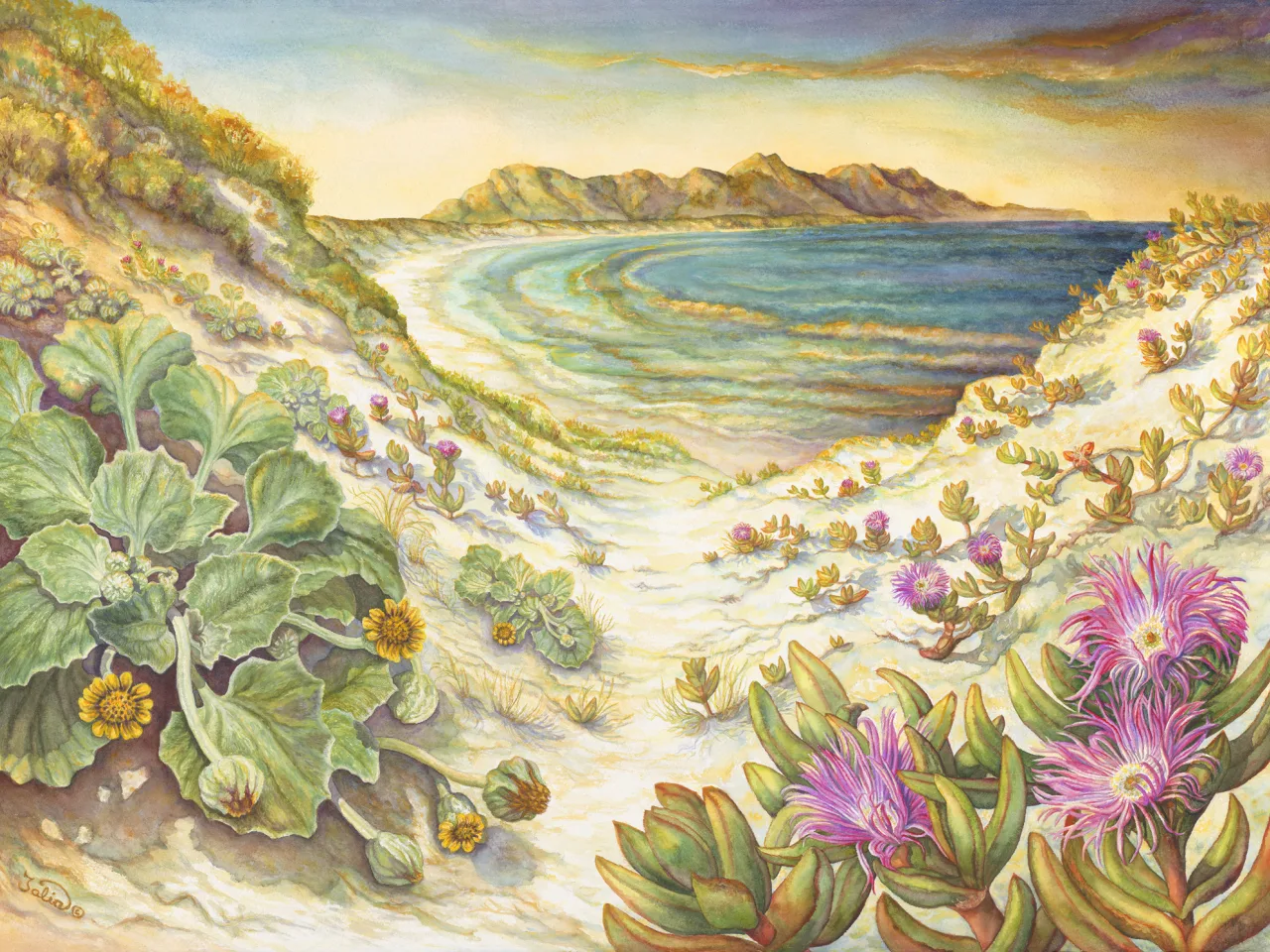Artwork 12 Last Light Over Cycad Gorge
Section 9
Southern Cypress Pines with Northern Kinship—the Cupressaceae Family of Native Pines
Palm Valley, Finke Gorge National Park, NT, Northern Territory
- 1. Callitris glaucophylla (white cypress pine)
- 2. Macrozamia macdonnellii (MacDonnell Ranges cycad)
Artwork 12
Buy a print
Limited edition giclee archival quality print on 310 gsm Ilford cotton rag (from an original work in watercolour on watercolour paper, 74 cm high x 56 cm wide)
from the artist
In 2002 I spent three memorable days exploring Finke Gorge National Park, having arranged to be taken in by four-wheel drive and picked up three days later. A campground off the winding Finke was home and headquarters for my small tent and long treks around legendary Palm Valley. In the late afternoon light, the ochre cliffs over the creek glowed orange, then red, as the Sun set. Irregular rows of cream to pale tan spinifex mounds wandered amongst the ragged red rocks, interspersed with blue-green cypress pines and white-trunked ghost gums. A perfect camp site for beauty and colour.
Ancient Palm Valley, with its special species of “red cabbage palms” found in this desert oasis quite isolated from their nearest relatives about 1,000 kms to the north, inspired many sketches, photos, and ideas for paintings. Two have become part of this series.
Last Light Over Cycad Gorge celebrates an ancient survivor which can only be found in the Palm Valley–MacDonnell Ranges area—an elegant feathery blue-green cycad named Macrozamia macdonnellii. It has ancestors in the fossil record dating from 250–300 million years ago (Hill et al., 1999; Kress & Sherwood, 2009).
They exist in Central Australia as relicts from a time when warm and humid conditions supported a luxuriant vegetation of cycads, conifers, and ferns throughout Australia. Cycads may have become stranded in Central Australia during the Late Jurassic or Early Cretaceous about 125–140 million years ago, as sea levels rose and inundated vast areas of inland Australia (White, 1986).
The orange-red seeds of Macrozamia macdonnellii are amongst the largest of any cycad (about 6–8 cm by 3.5–5 cm each and weighing about 50 g) (Jones 1993/2000). This is likely to be an adaptation for survival in the rugged conditions where they grow—often on the sides of rocky gorges and interspersed between large boulders.
Palm Valley sandstones were once dunes, laid down in the Silurian Period about 420 mya (Johnson, 2004/2005). Palm Creek itself has been eroding new sandstone sculptures from these ancient dunes and nurturing its moisture-loving flora for the last 20 million years (Thompson, 1995). Here plants are hidden away from the arid, sandy Finke, with its occasional rushing floodwaters capable of uprooting palms and other shallow-rooted plants. Cycads and white cypress pines thrive on the sandstone gorge walls, and palms appear to sprout from minor cracks in bare sandstone platforms.
